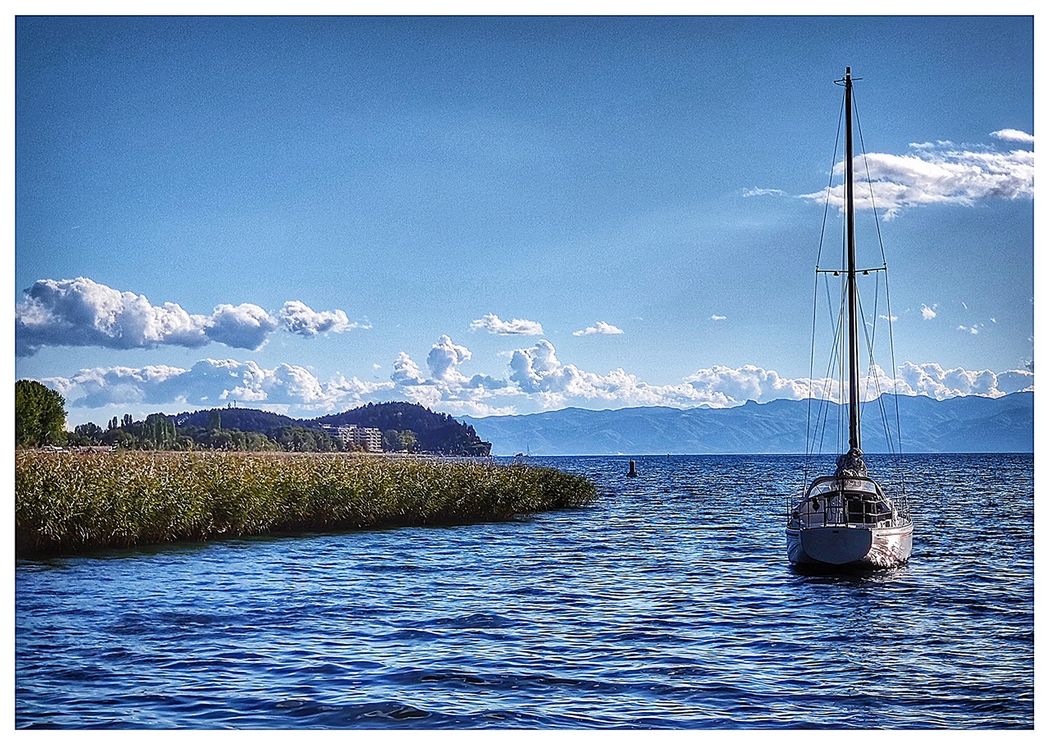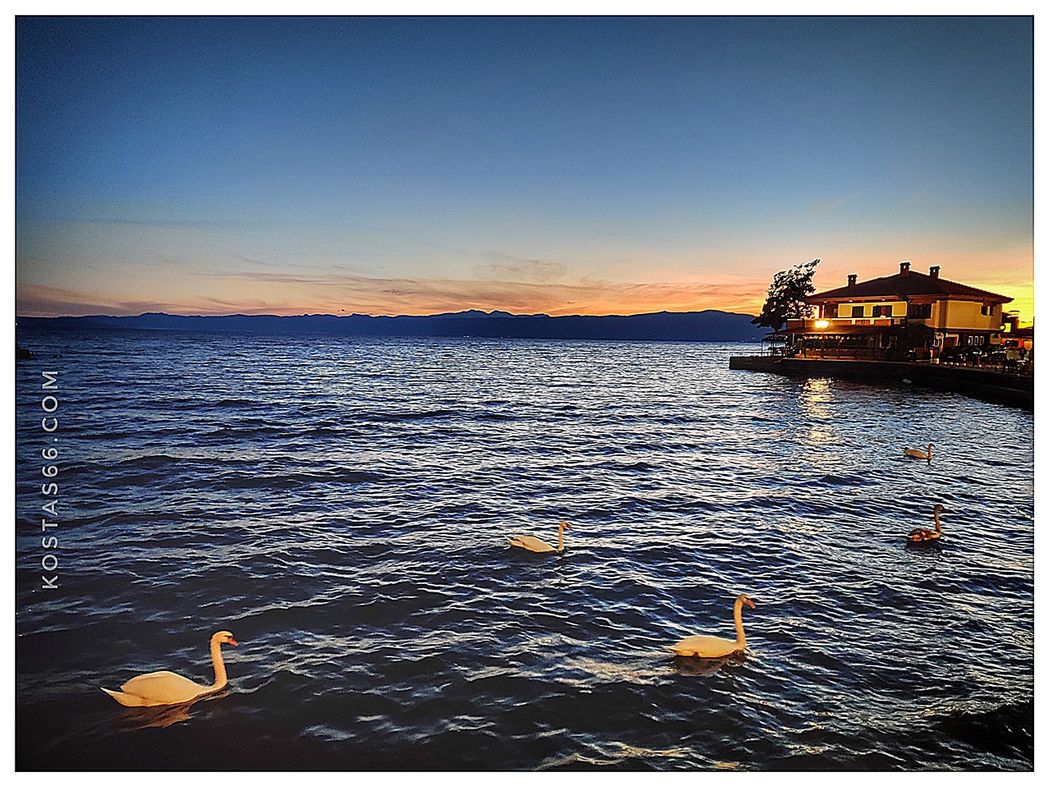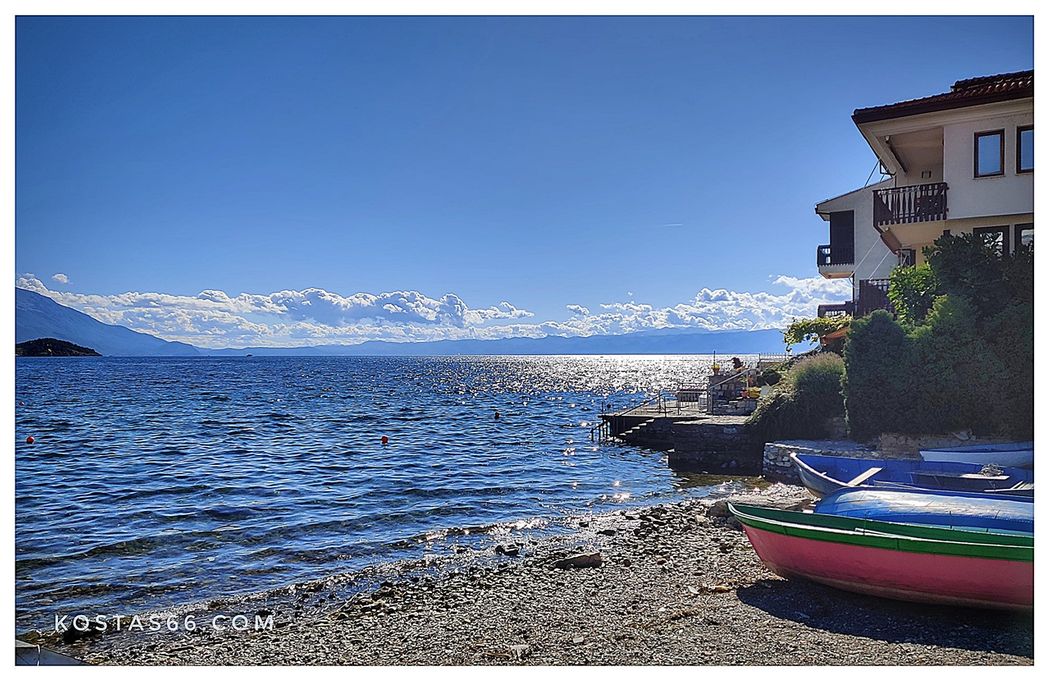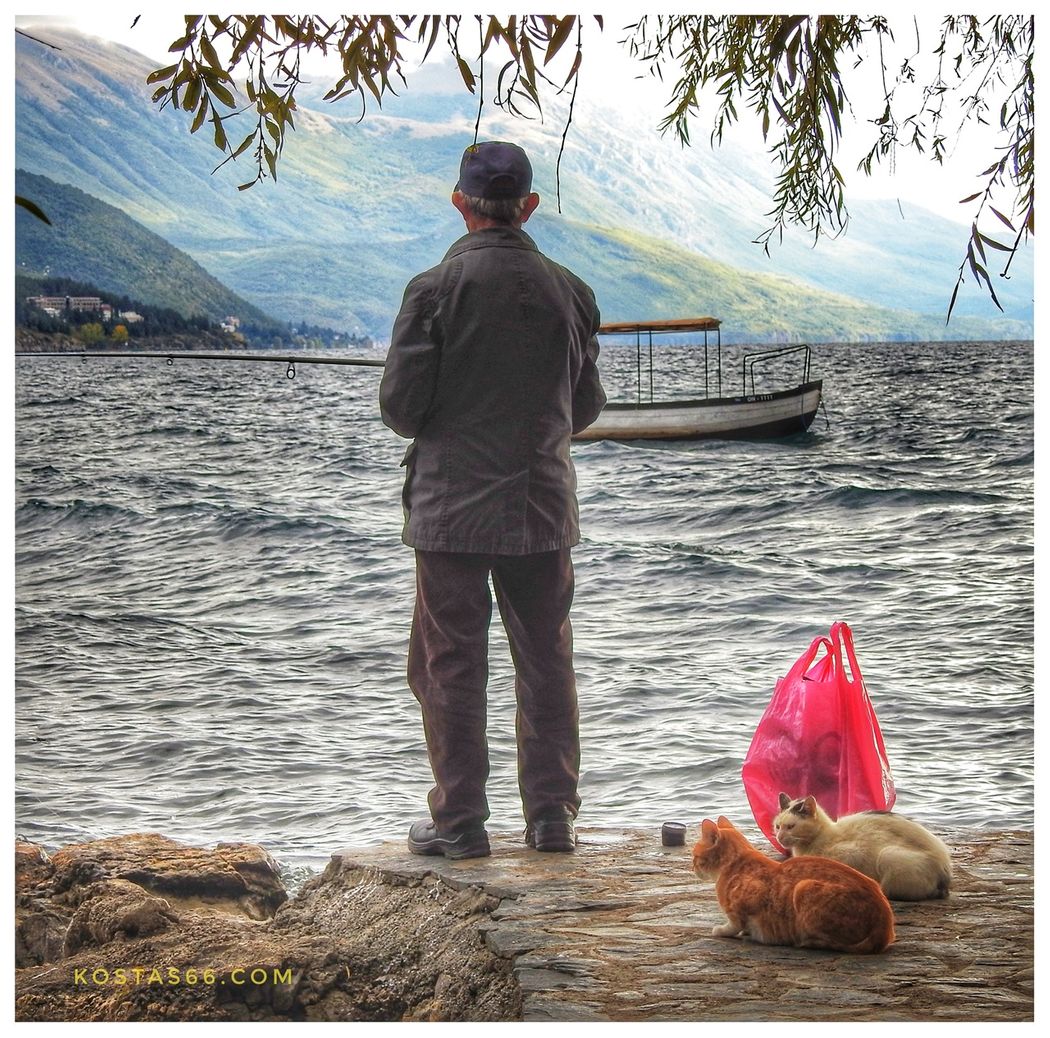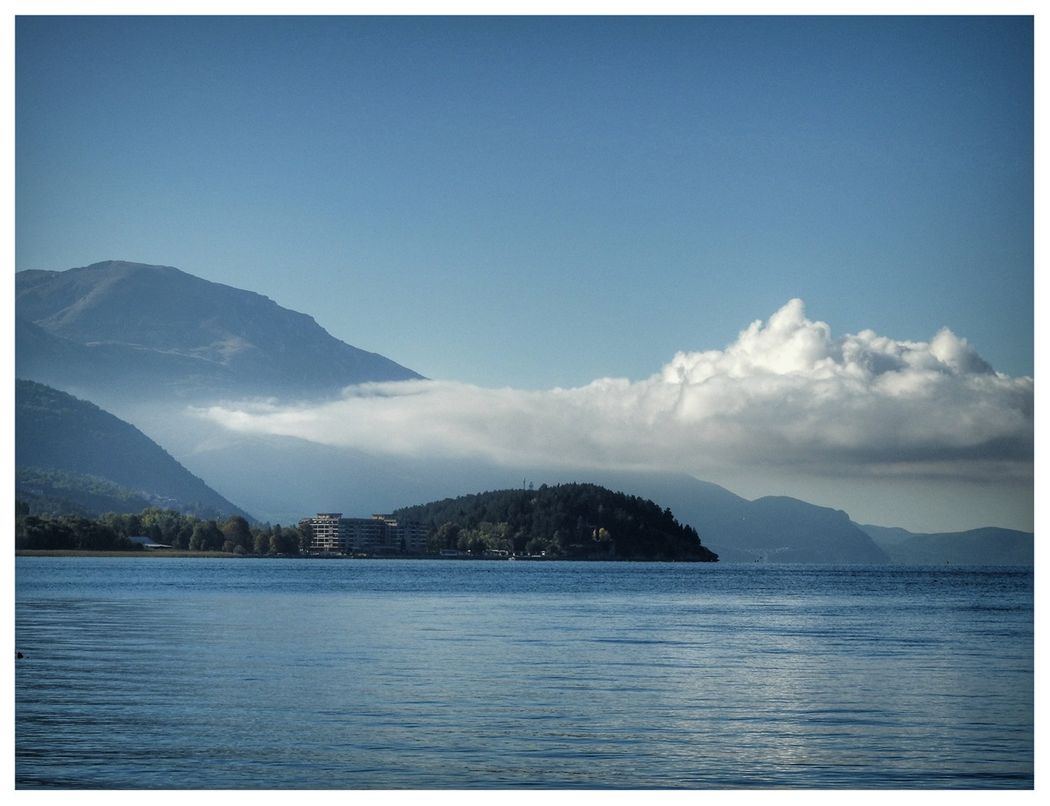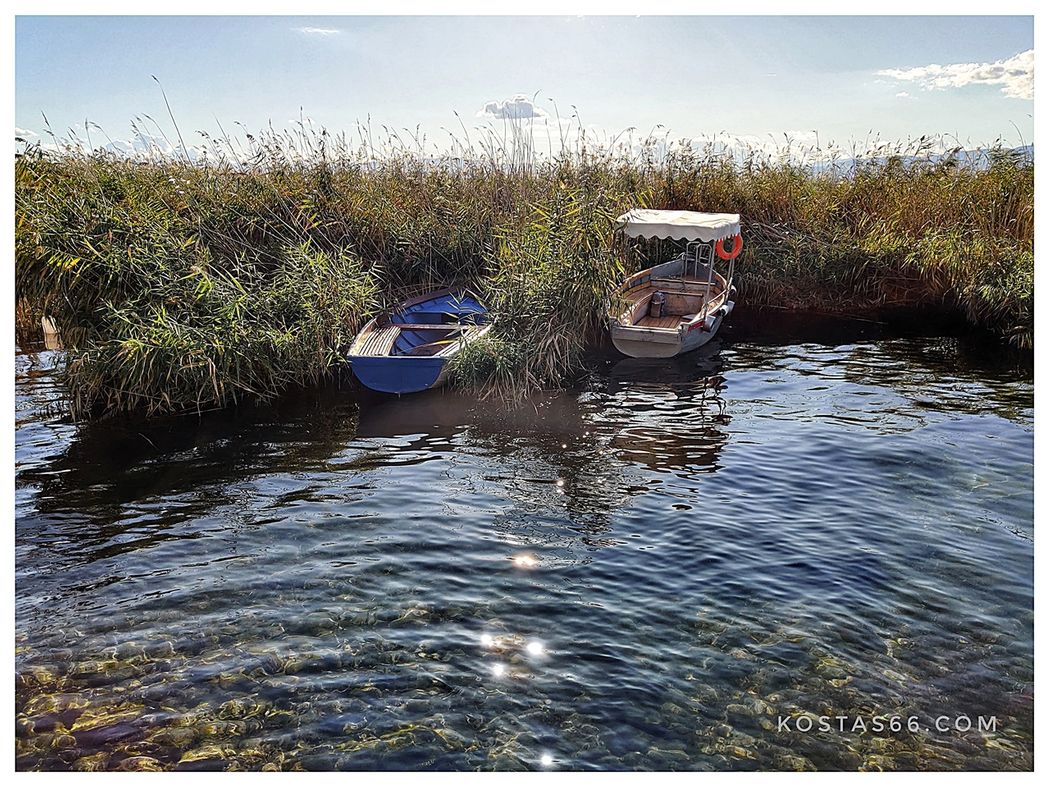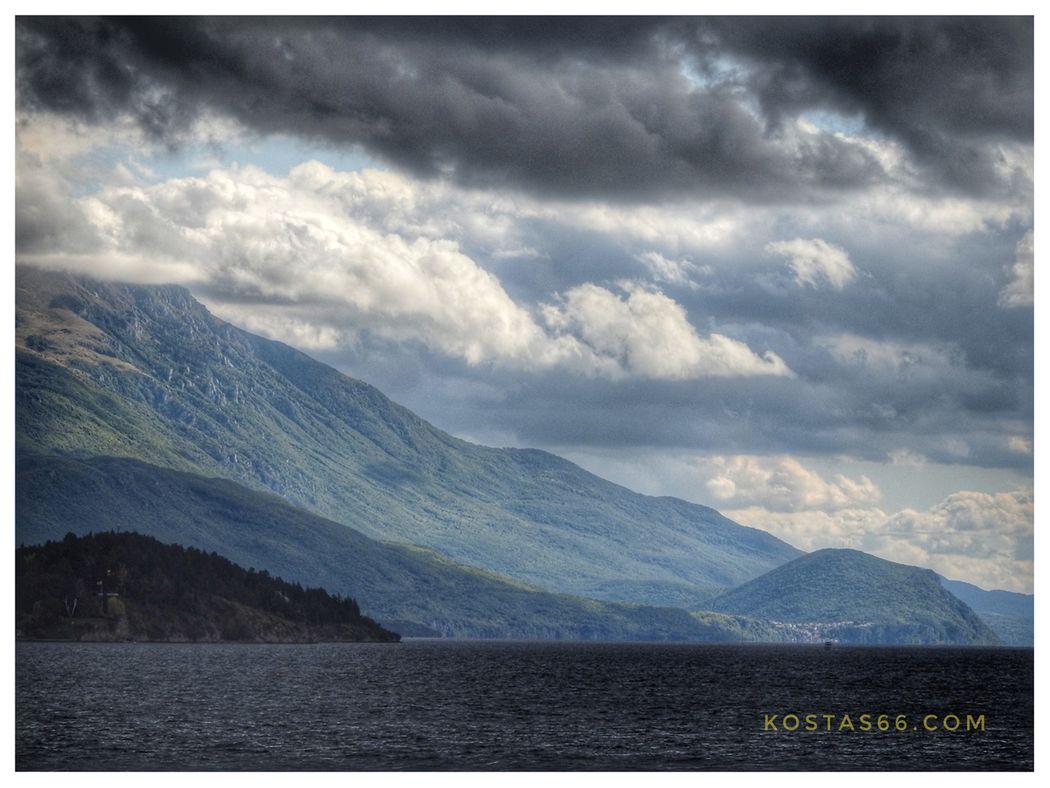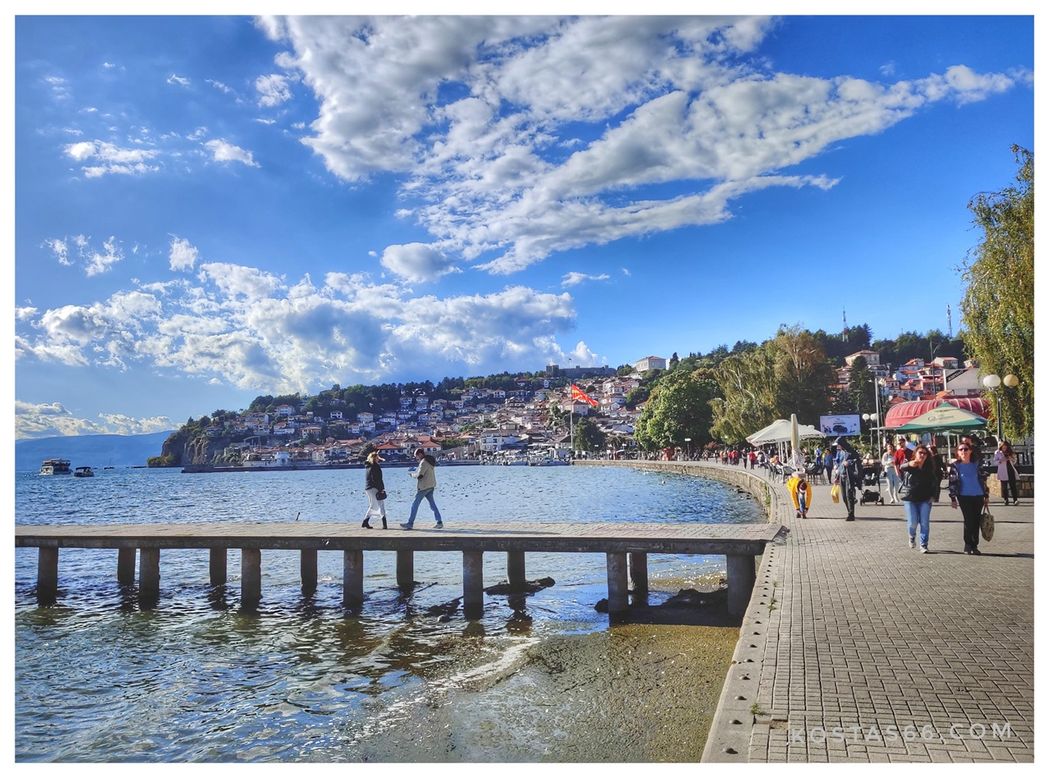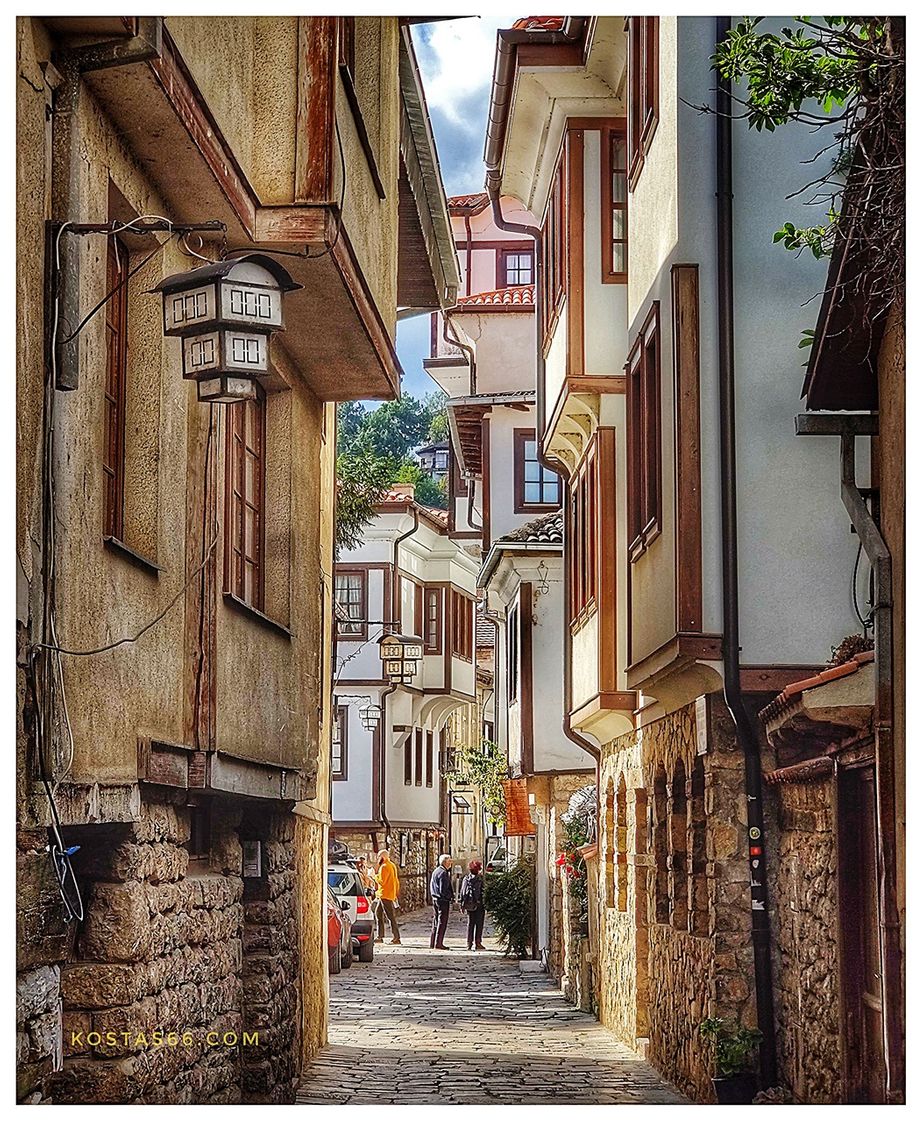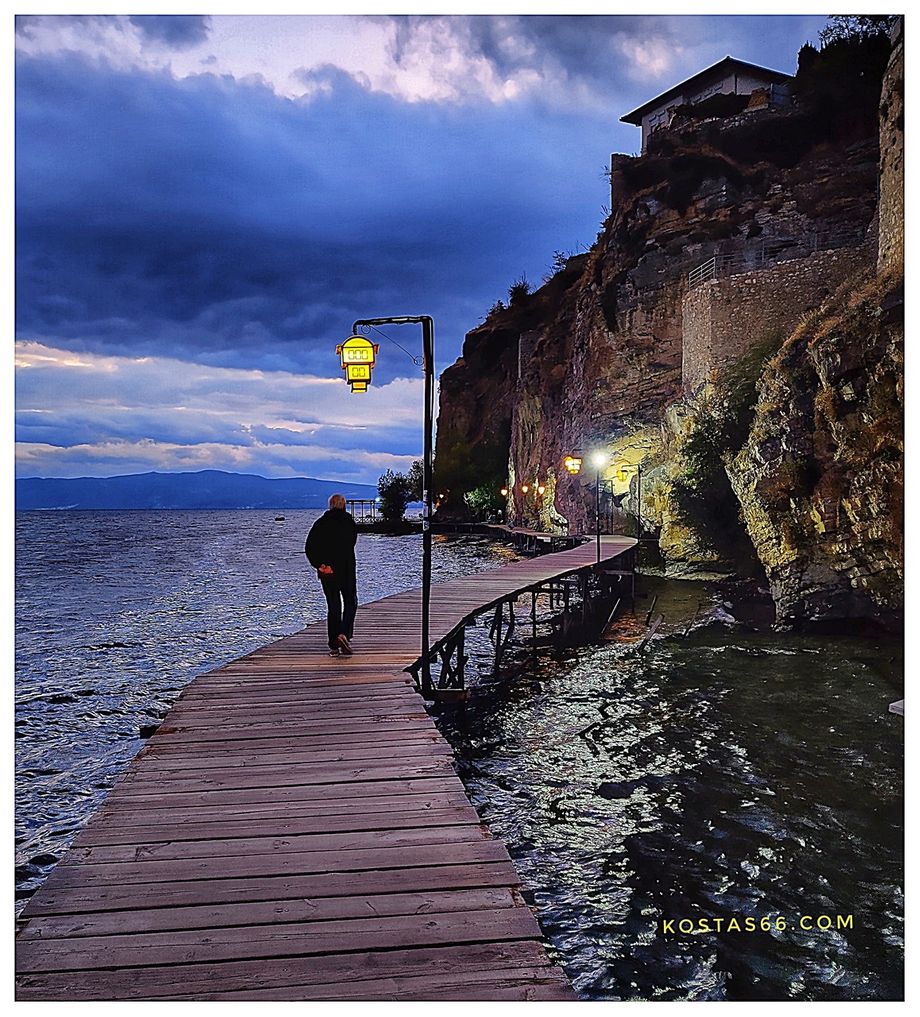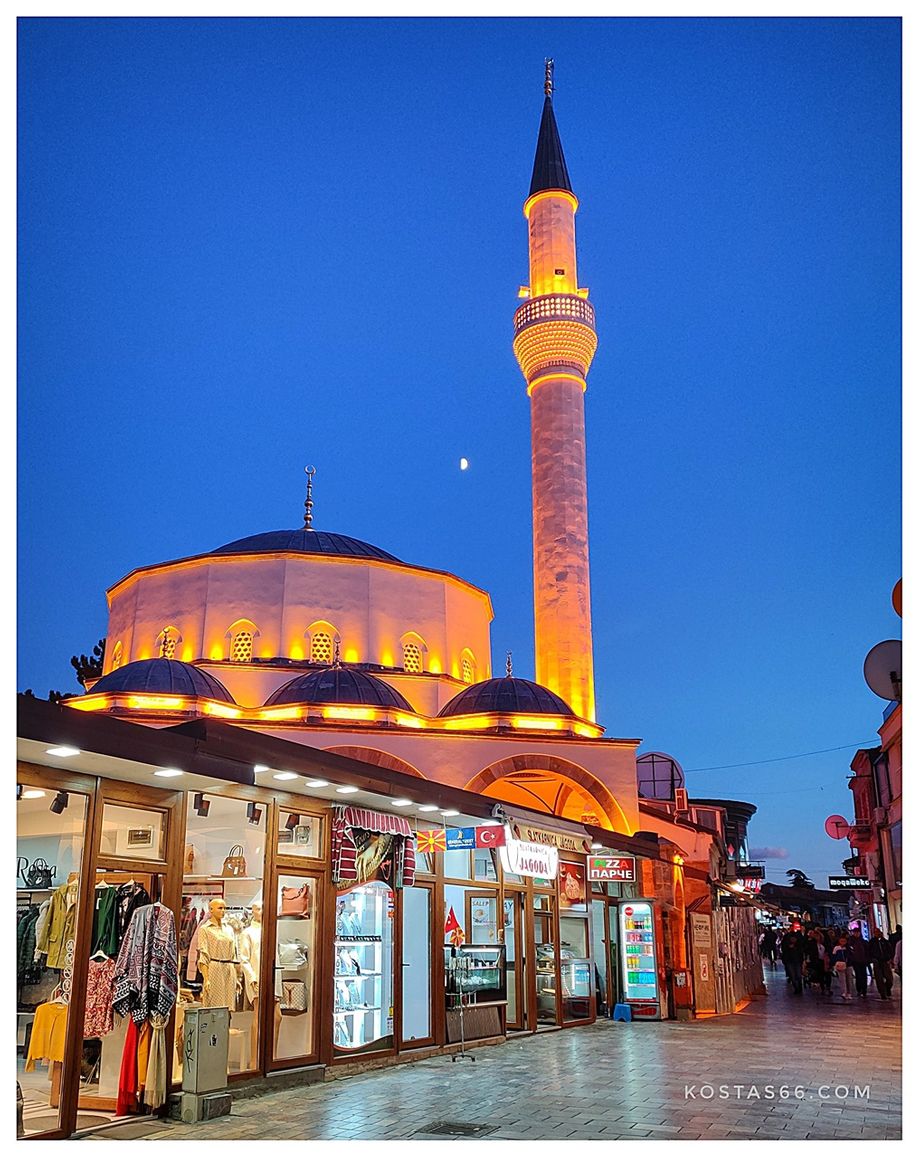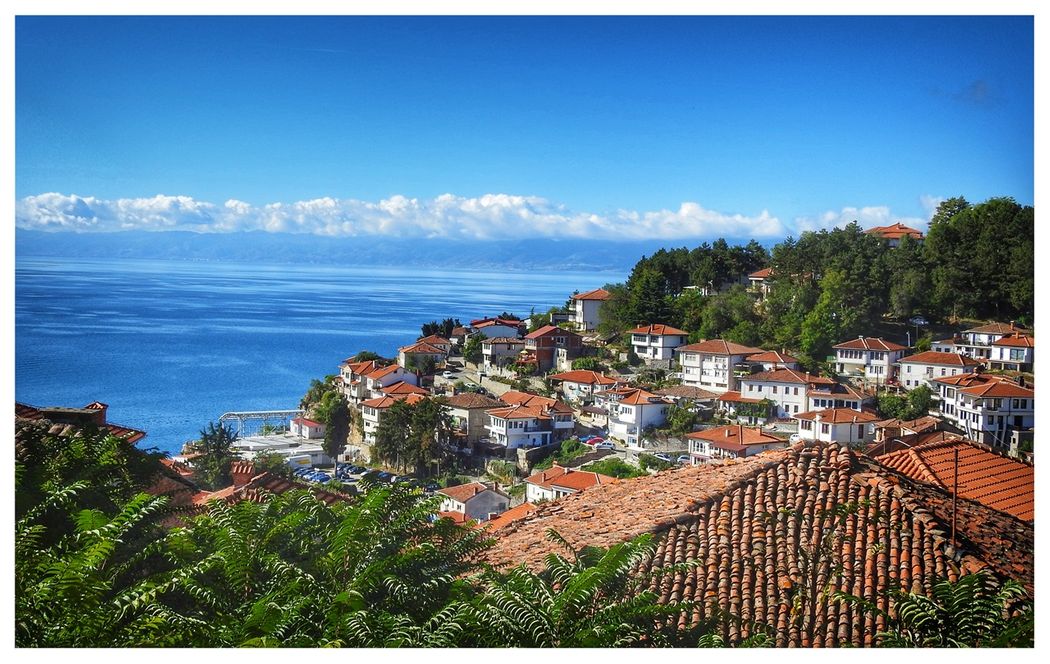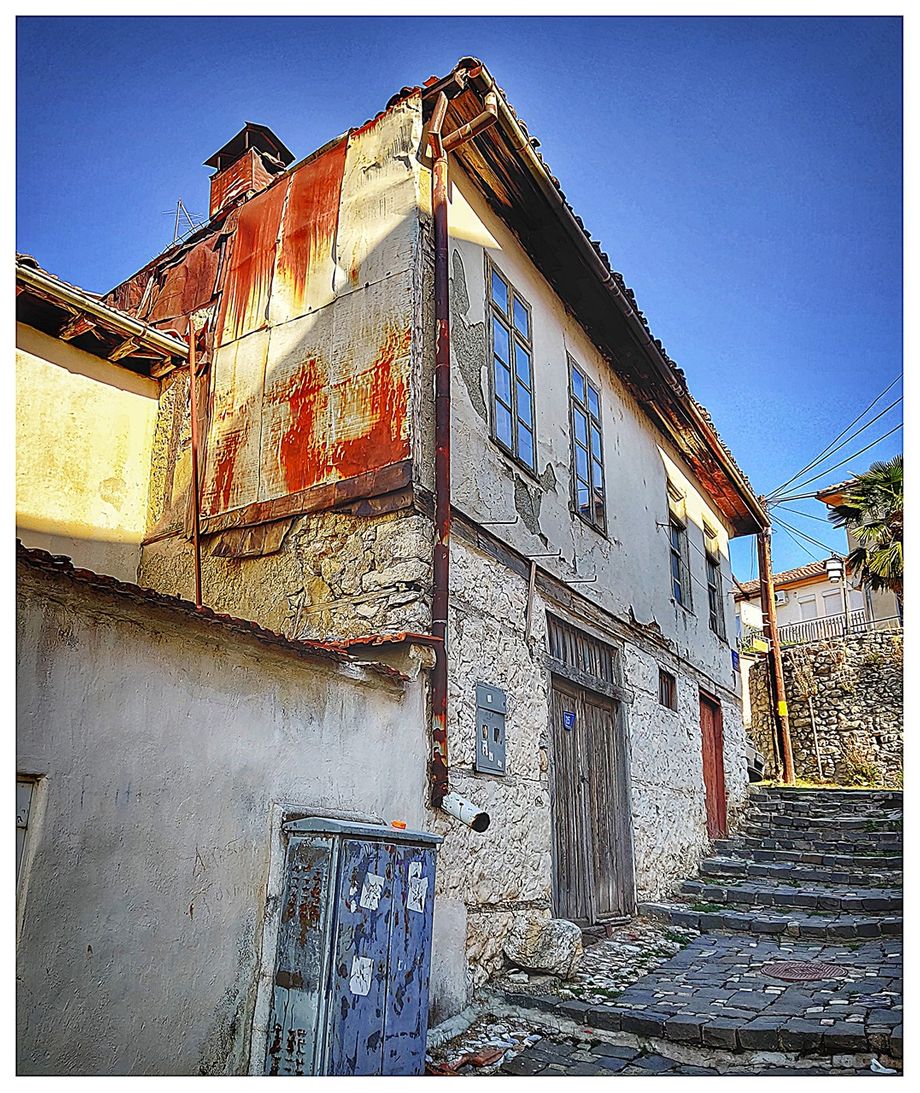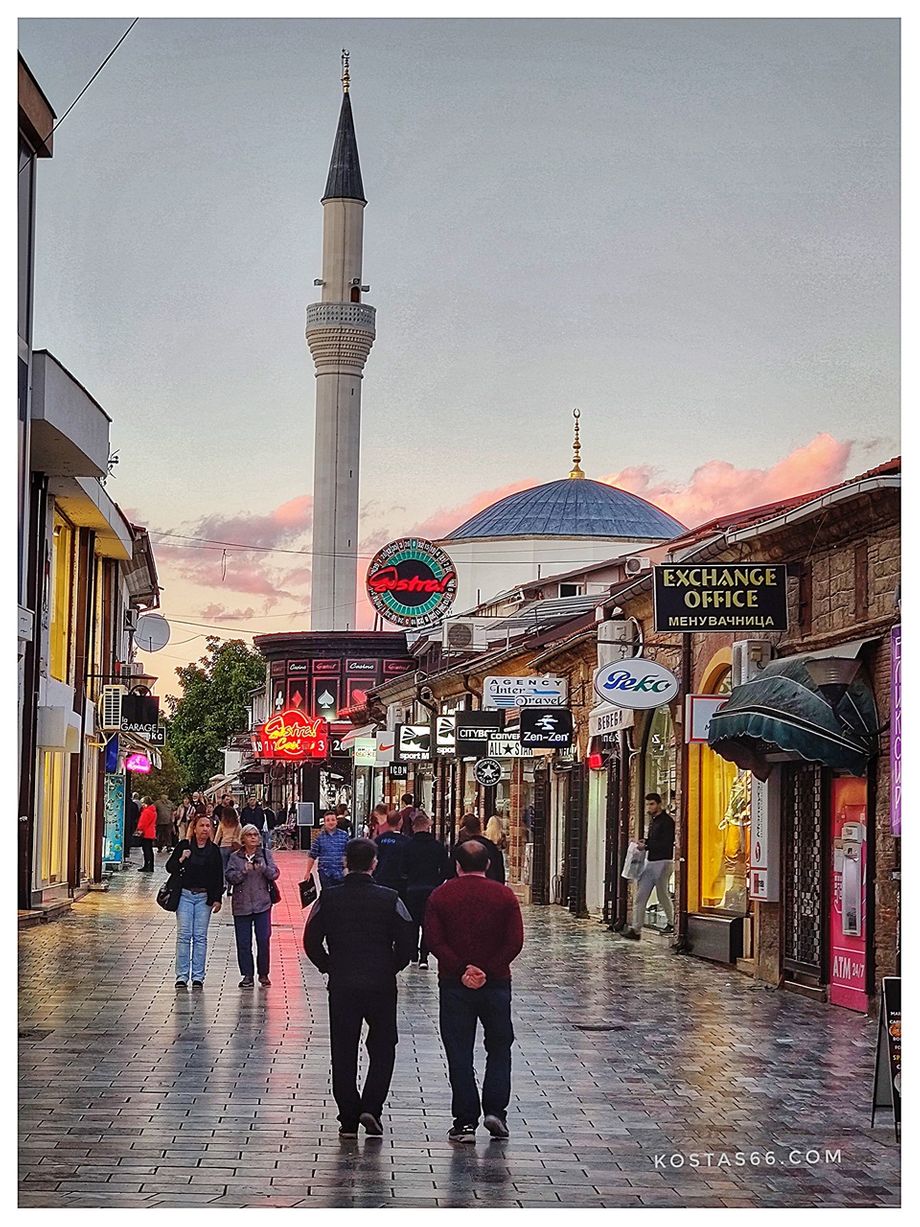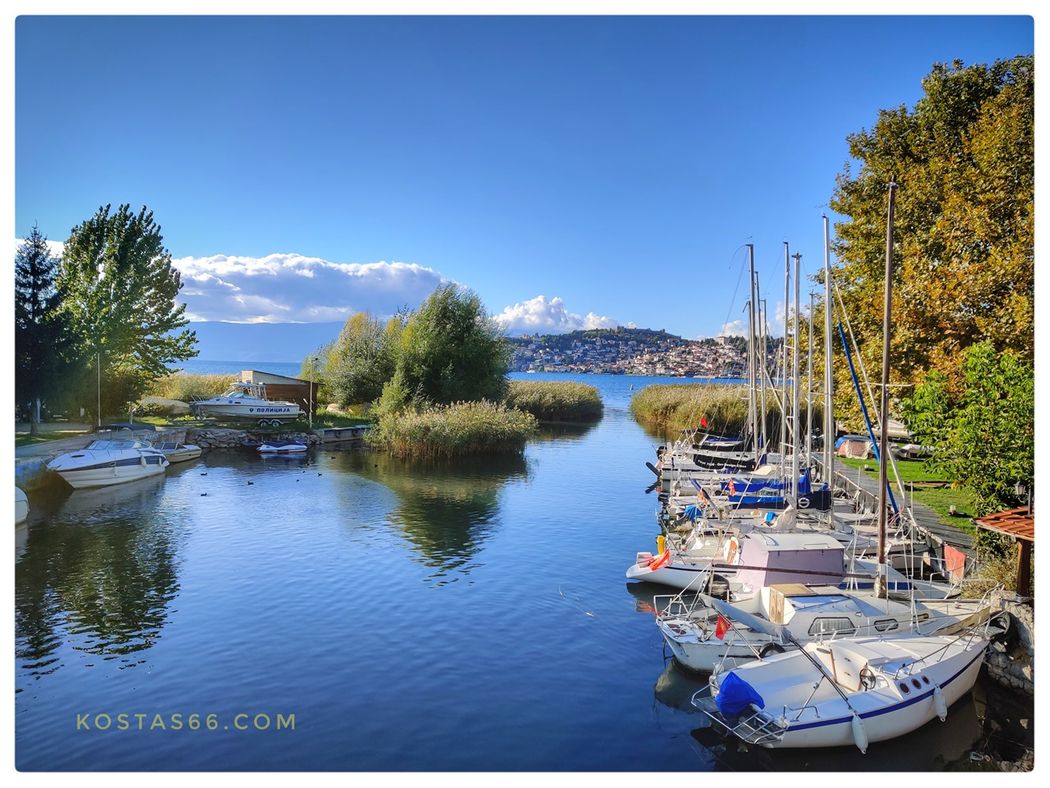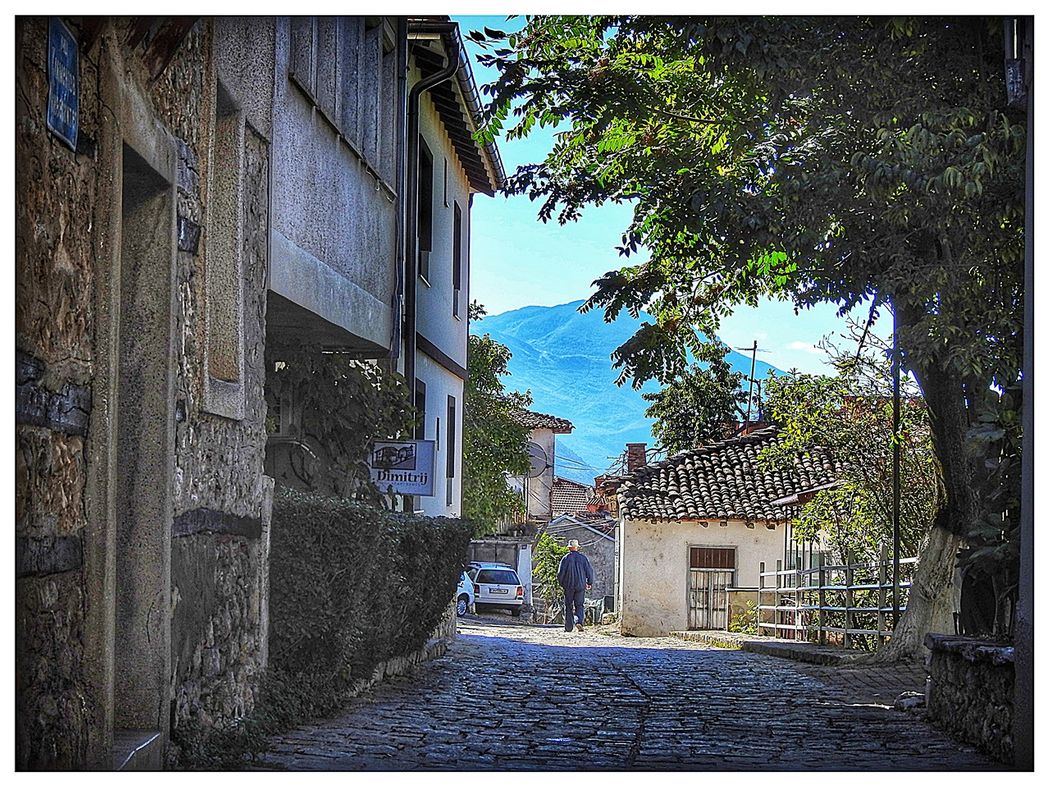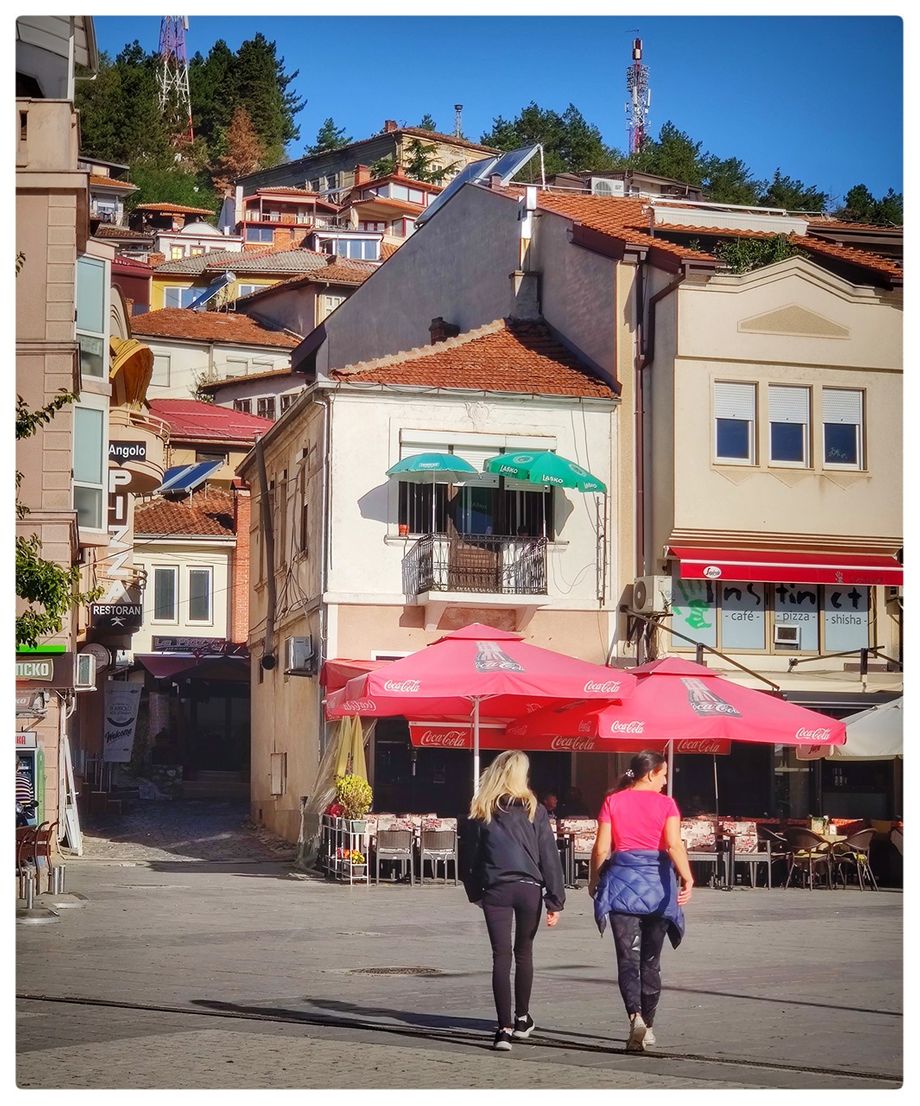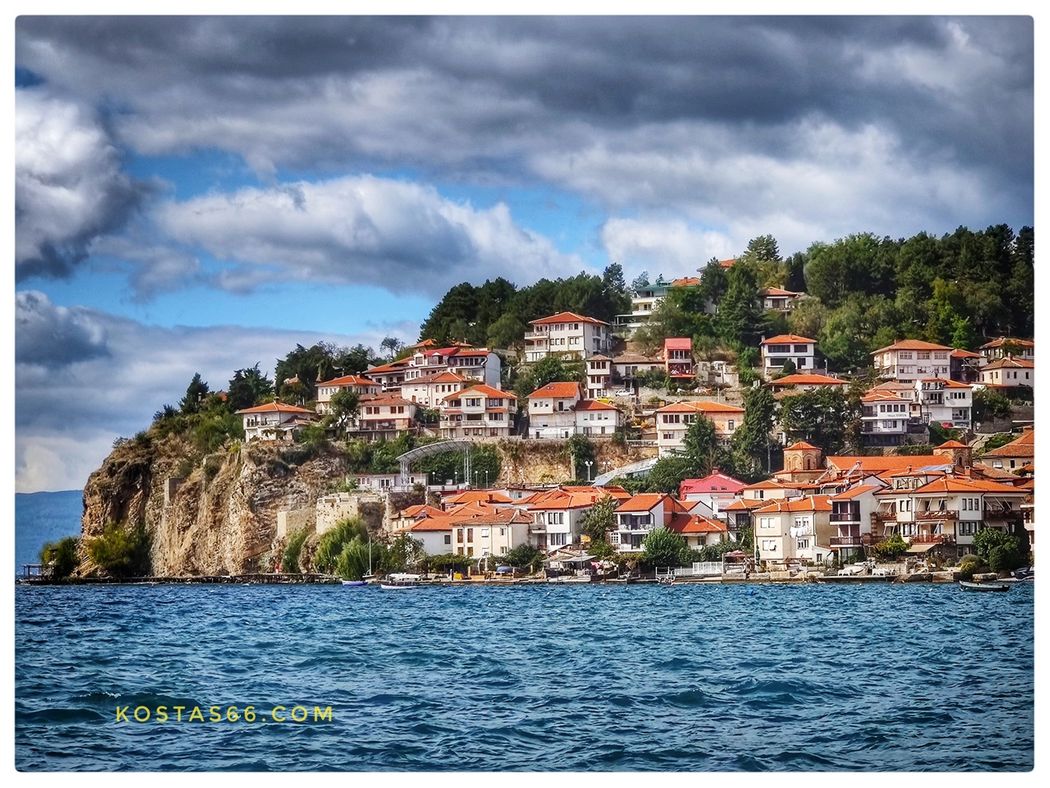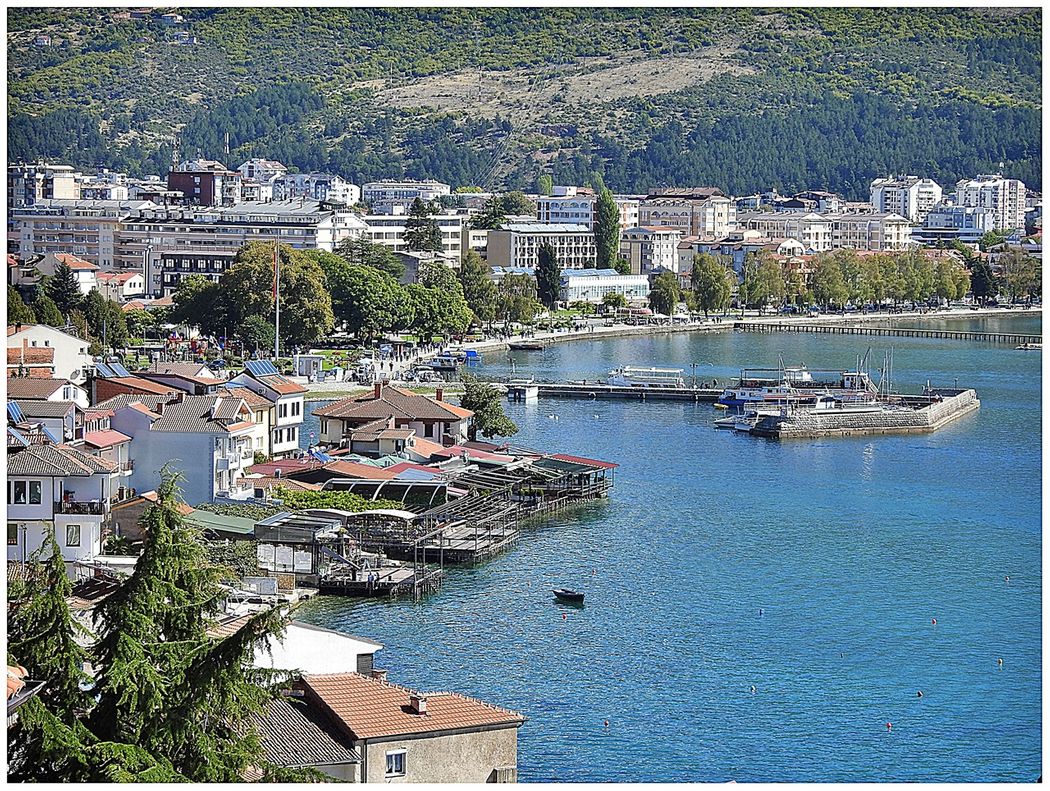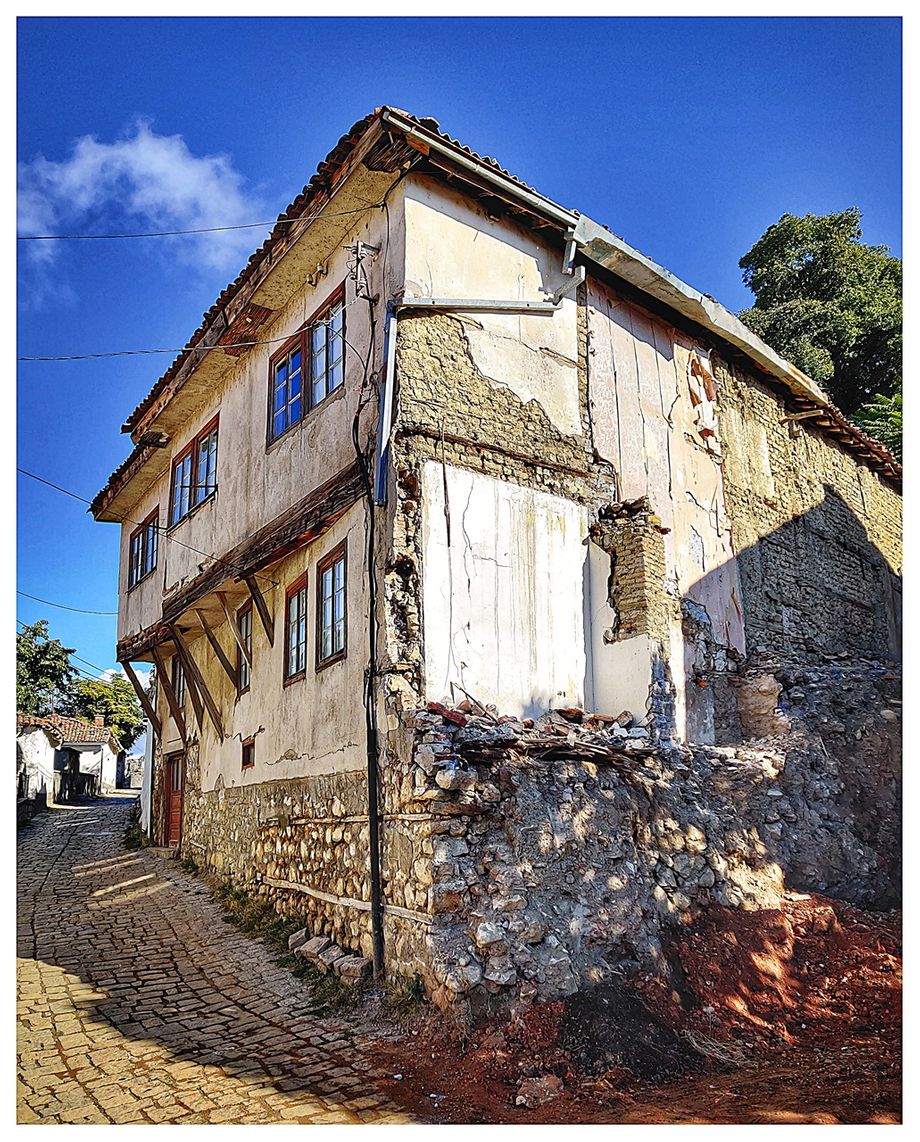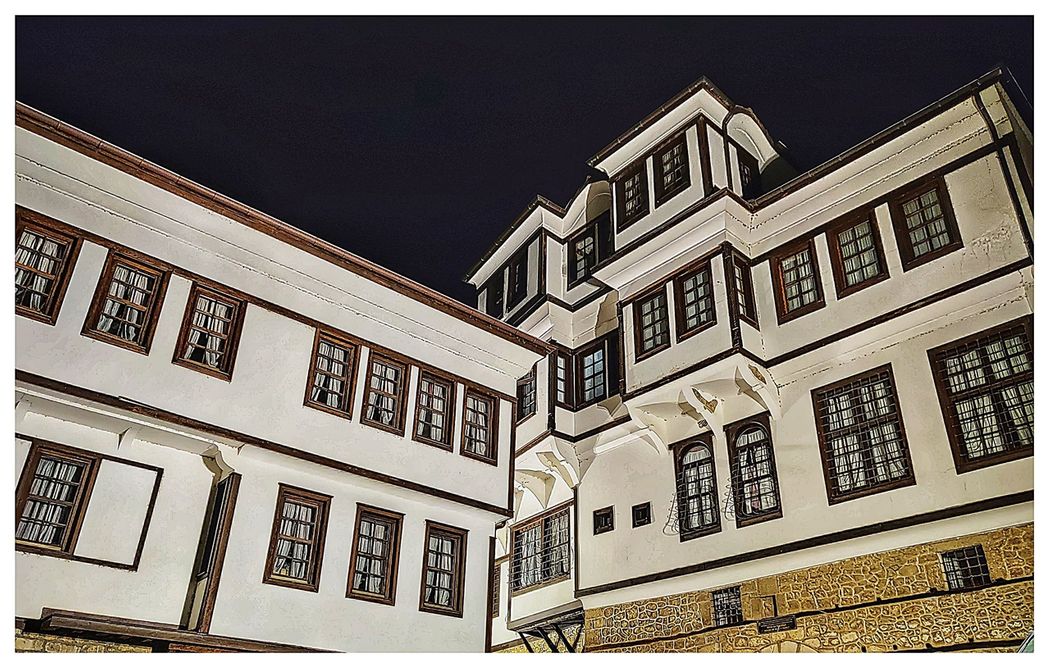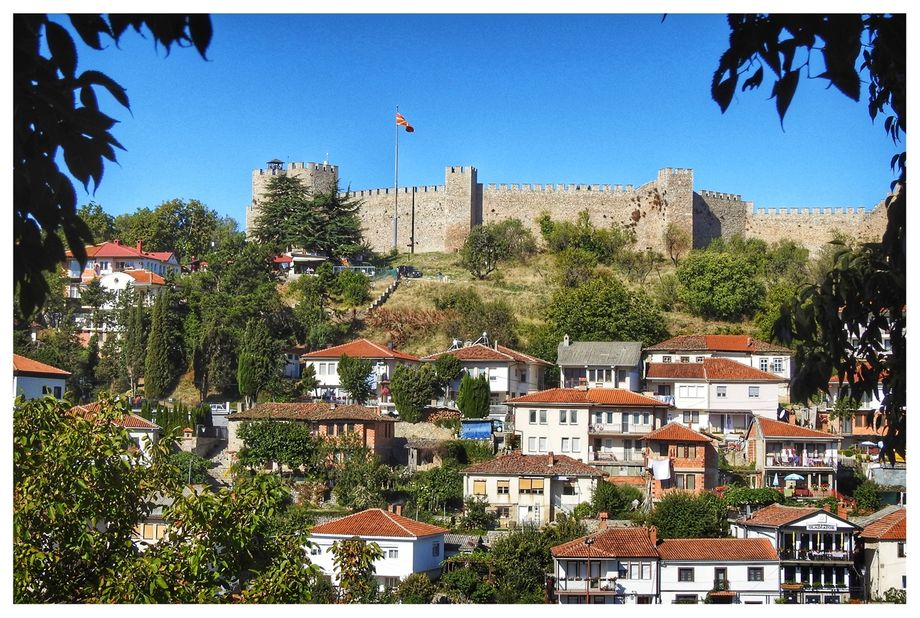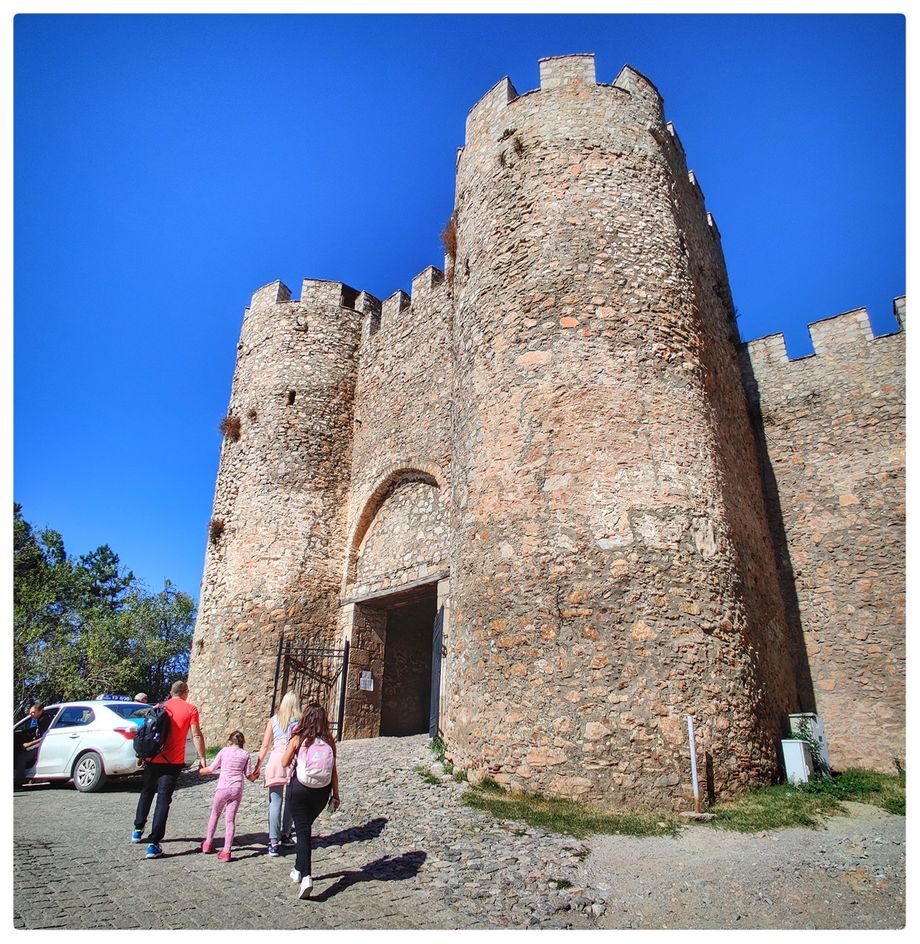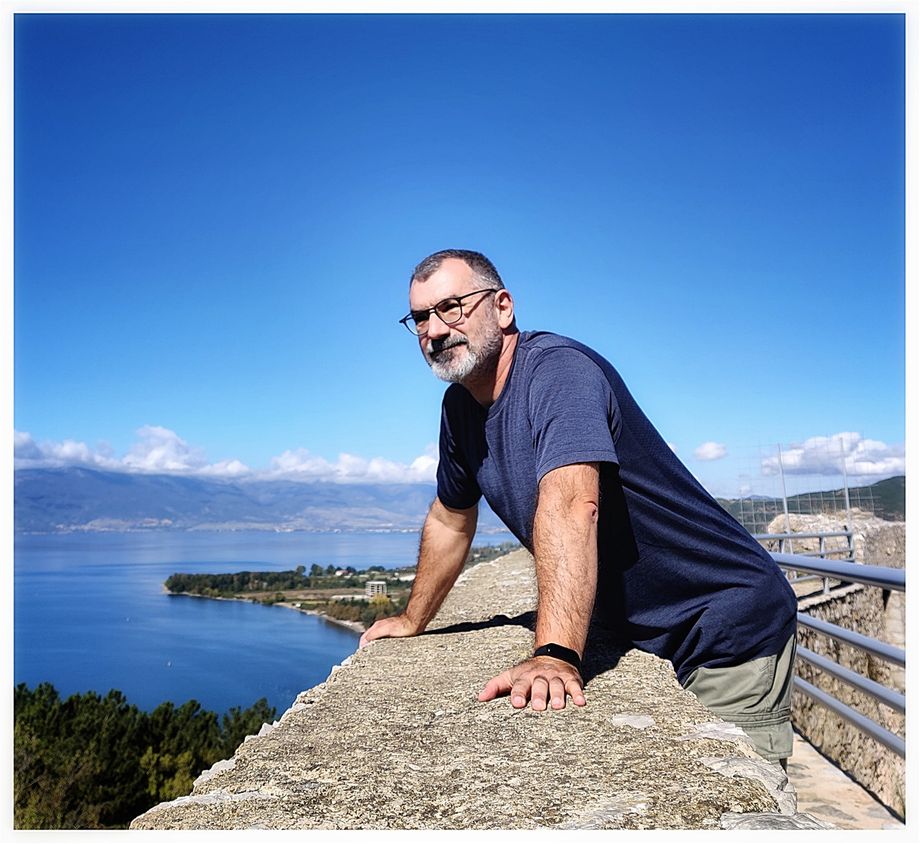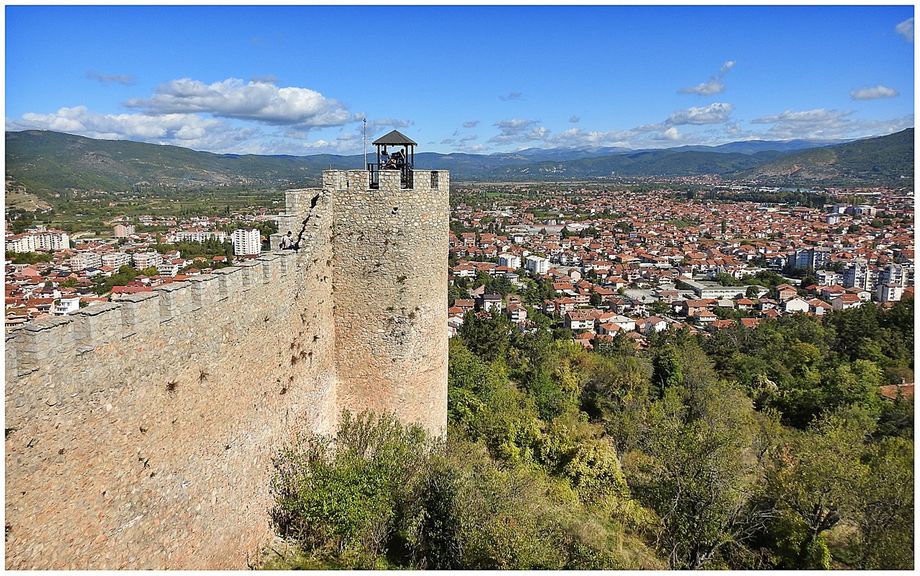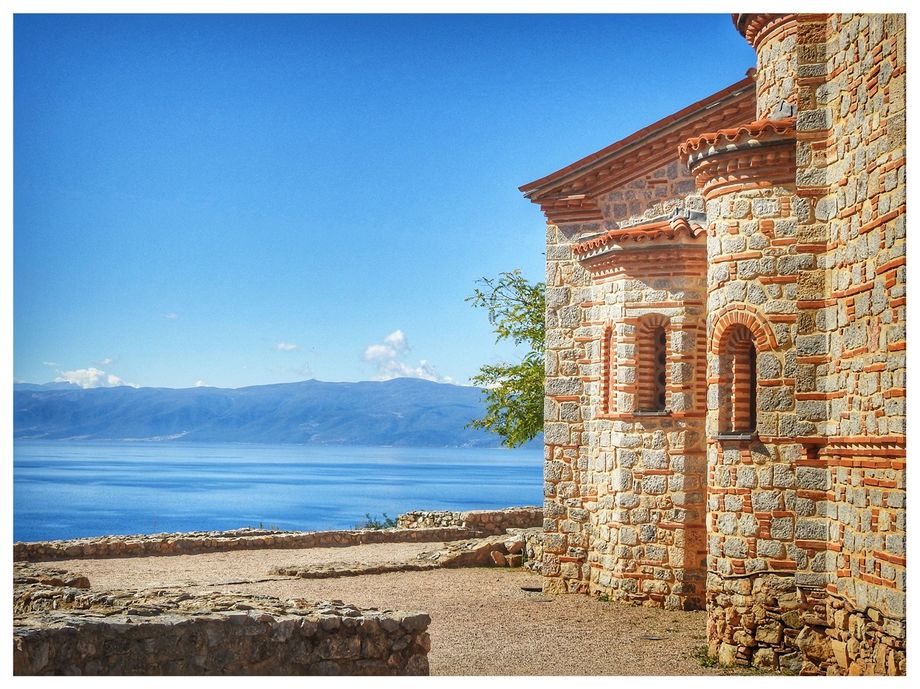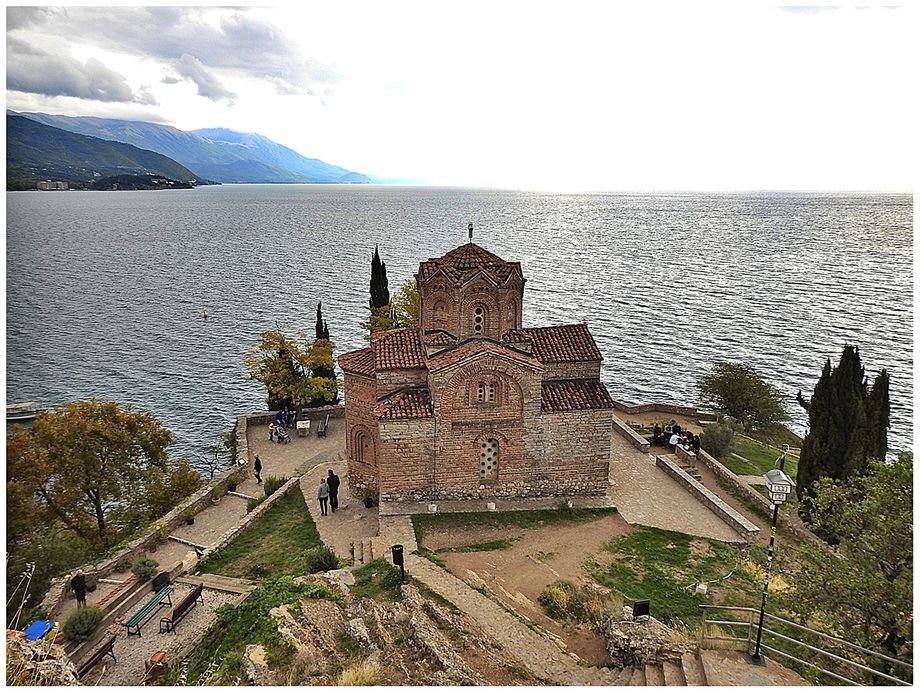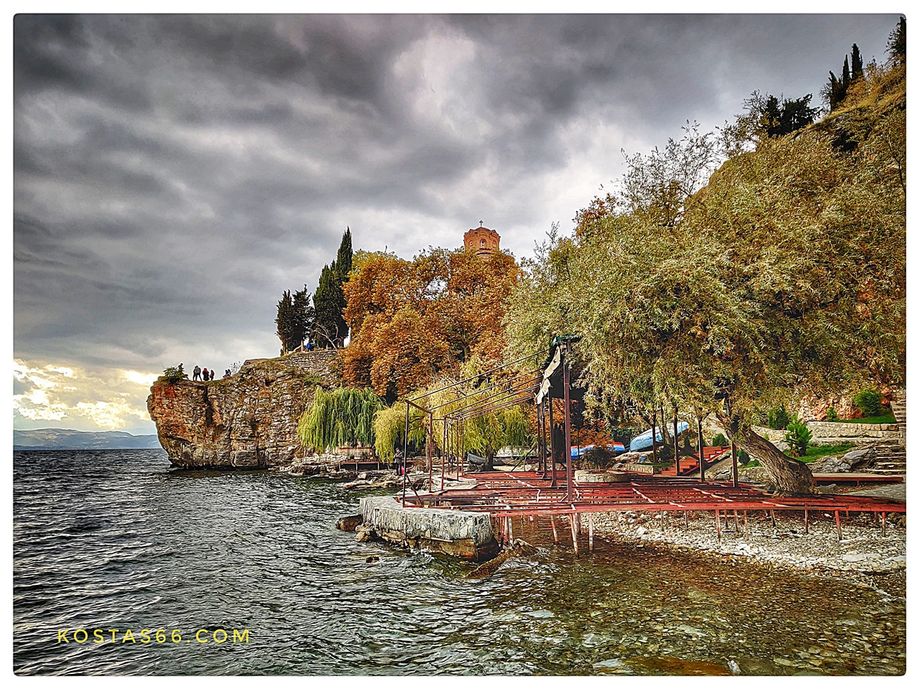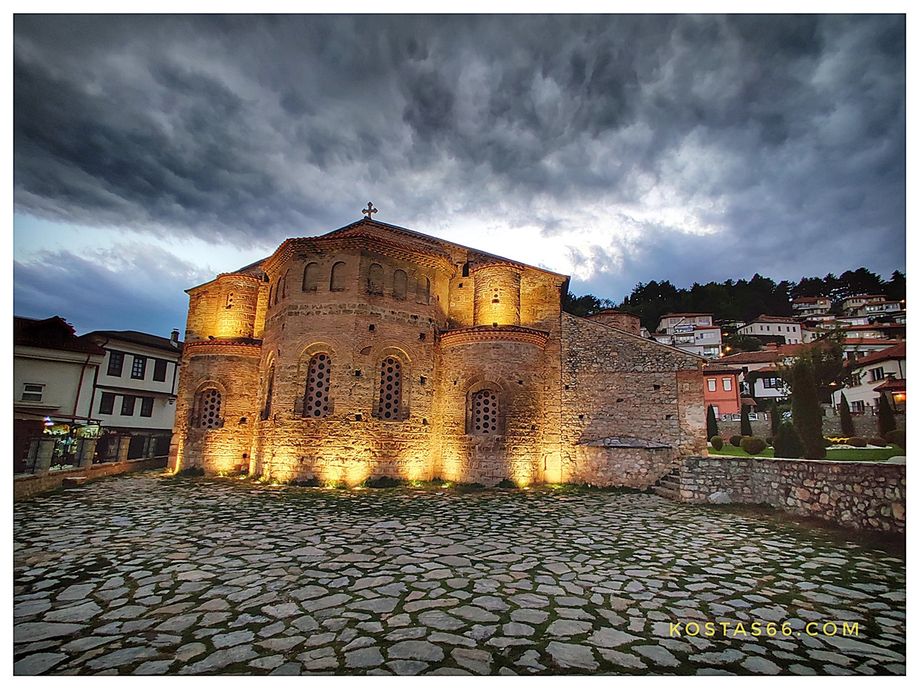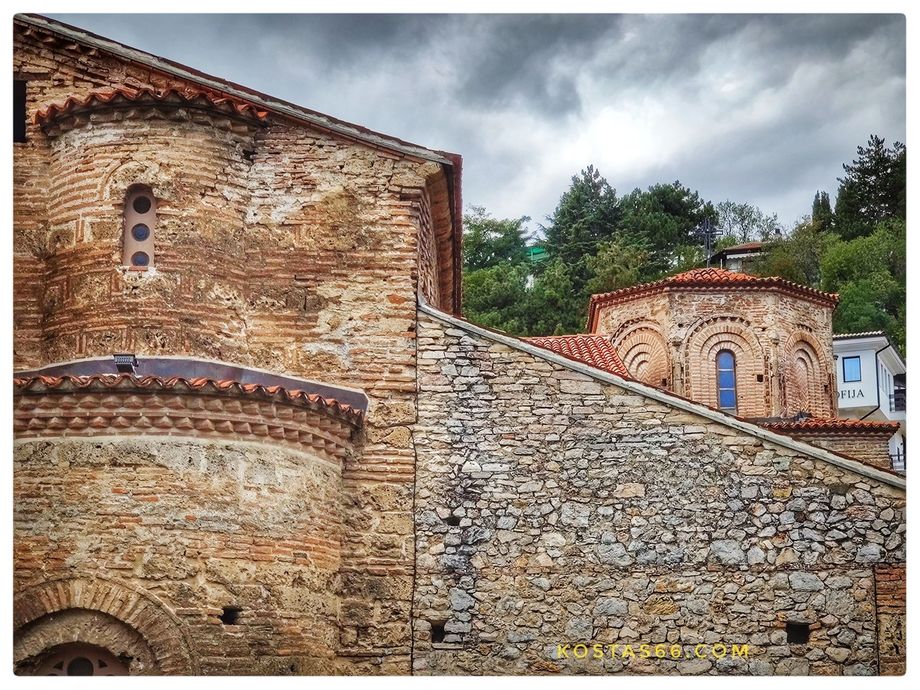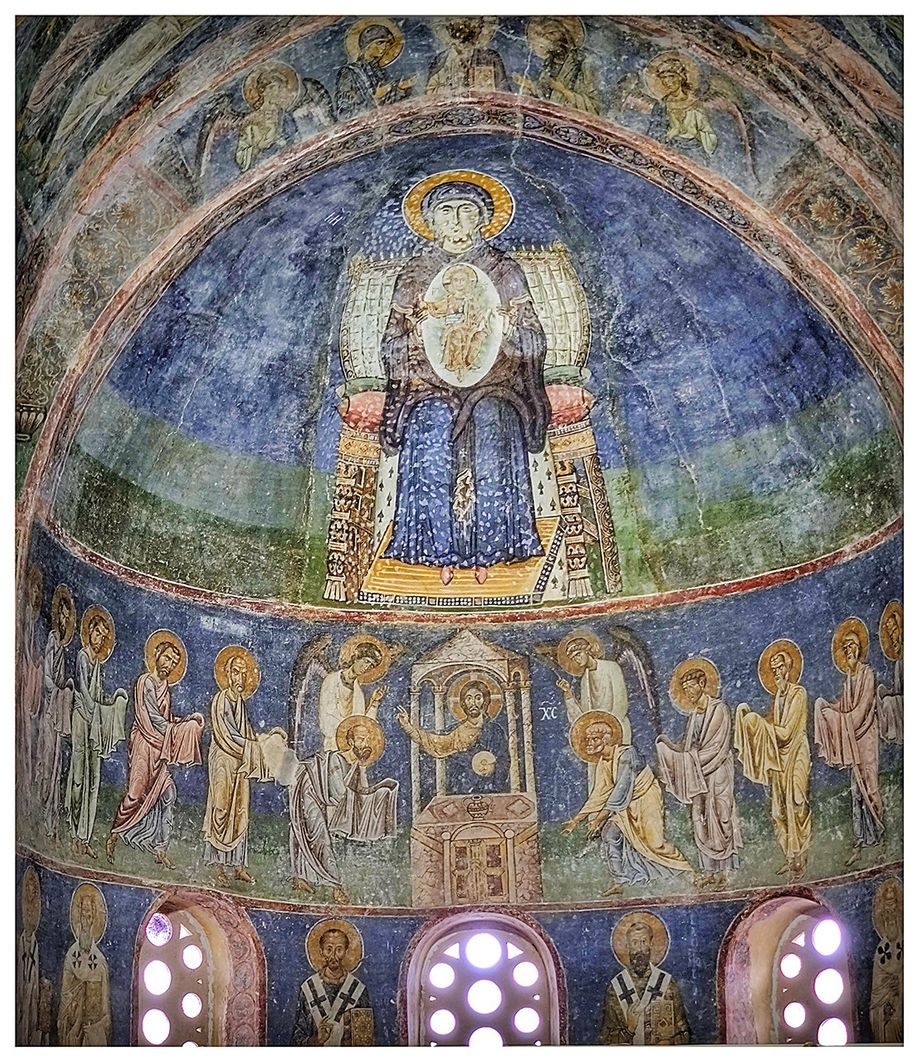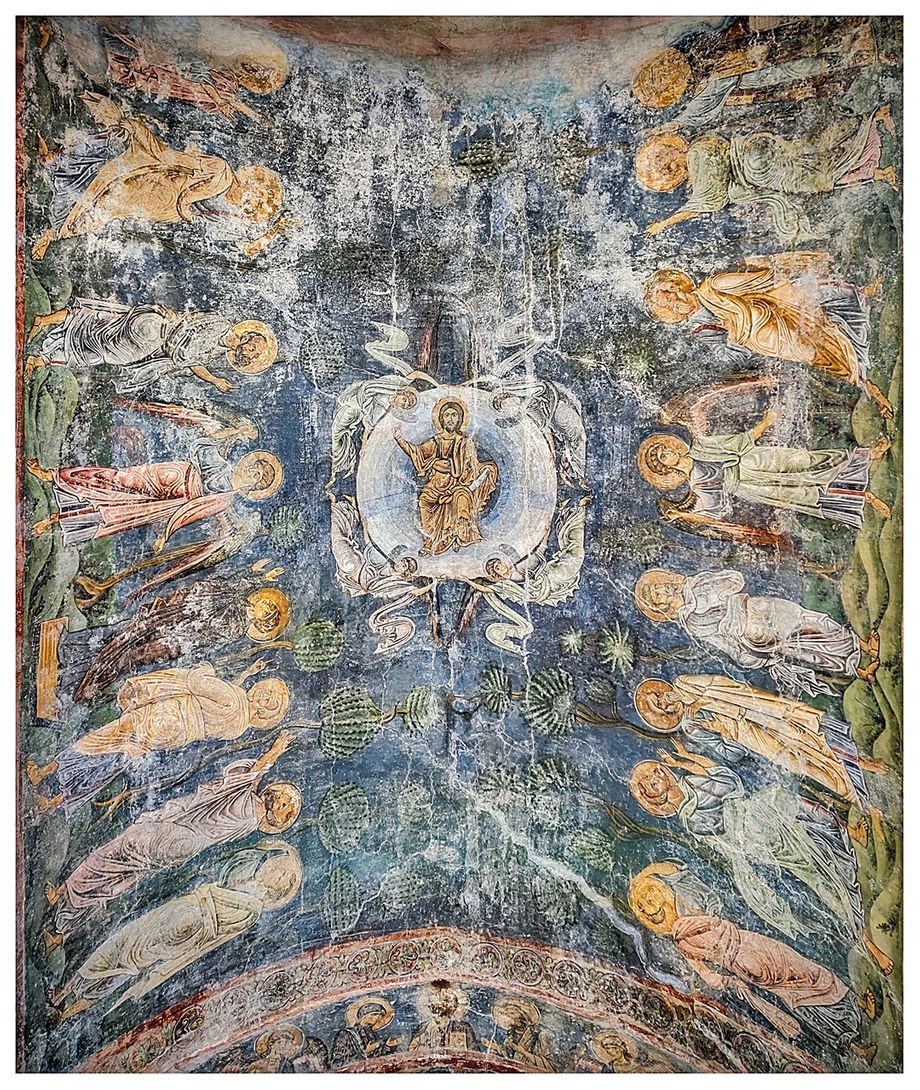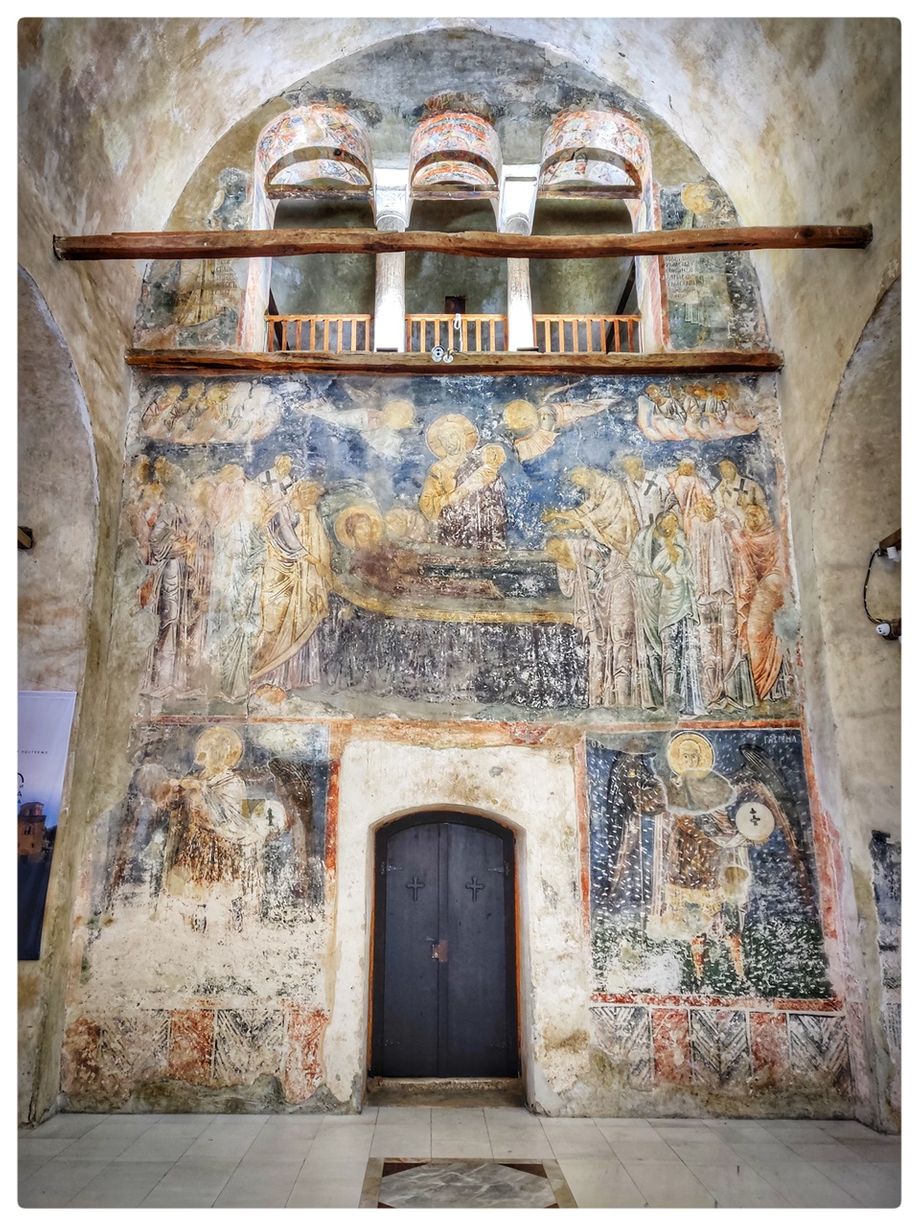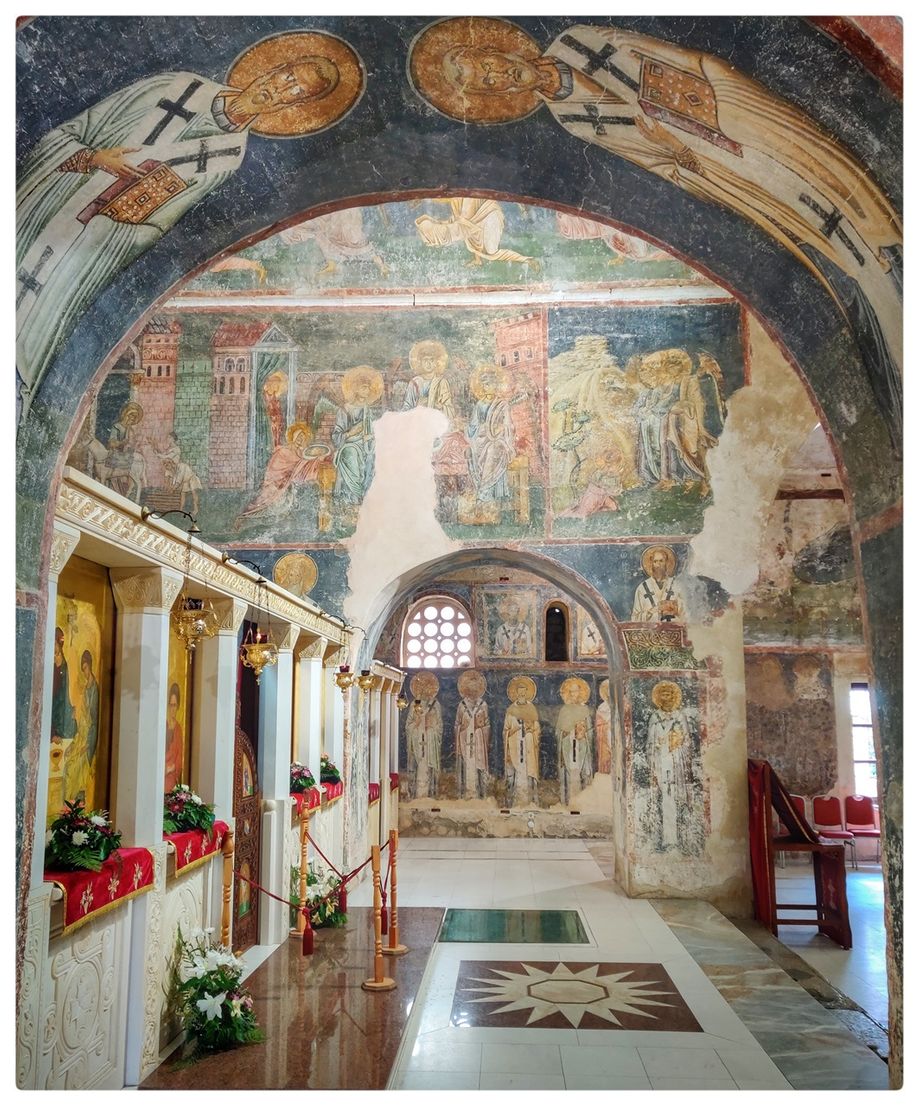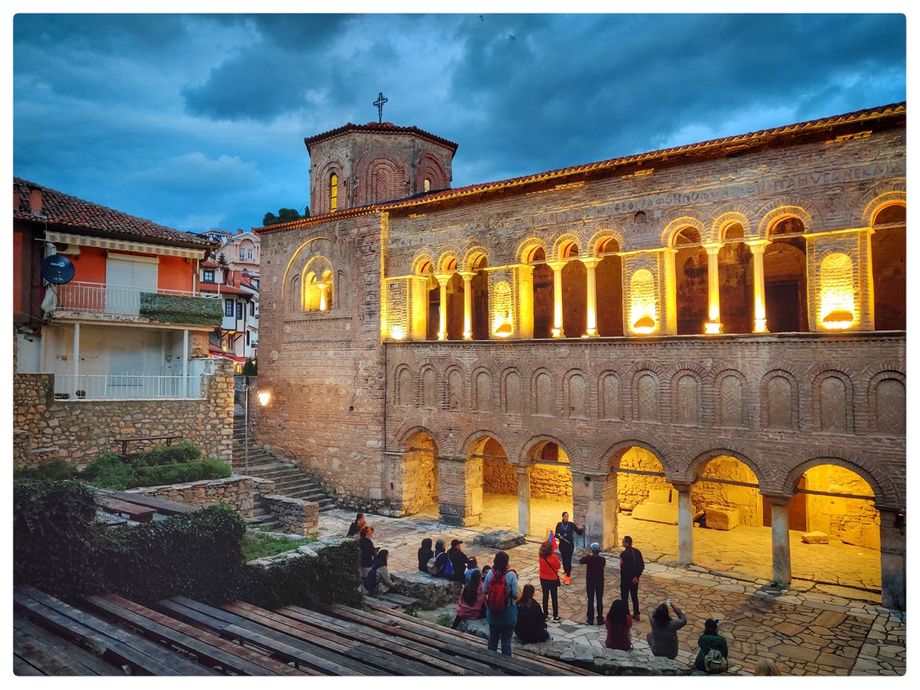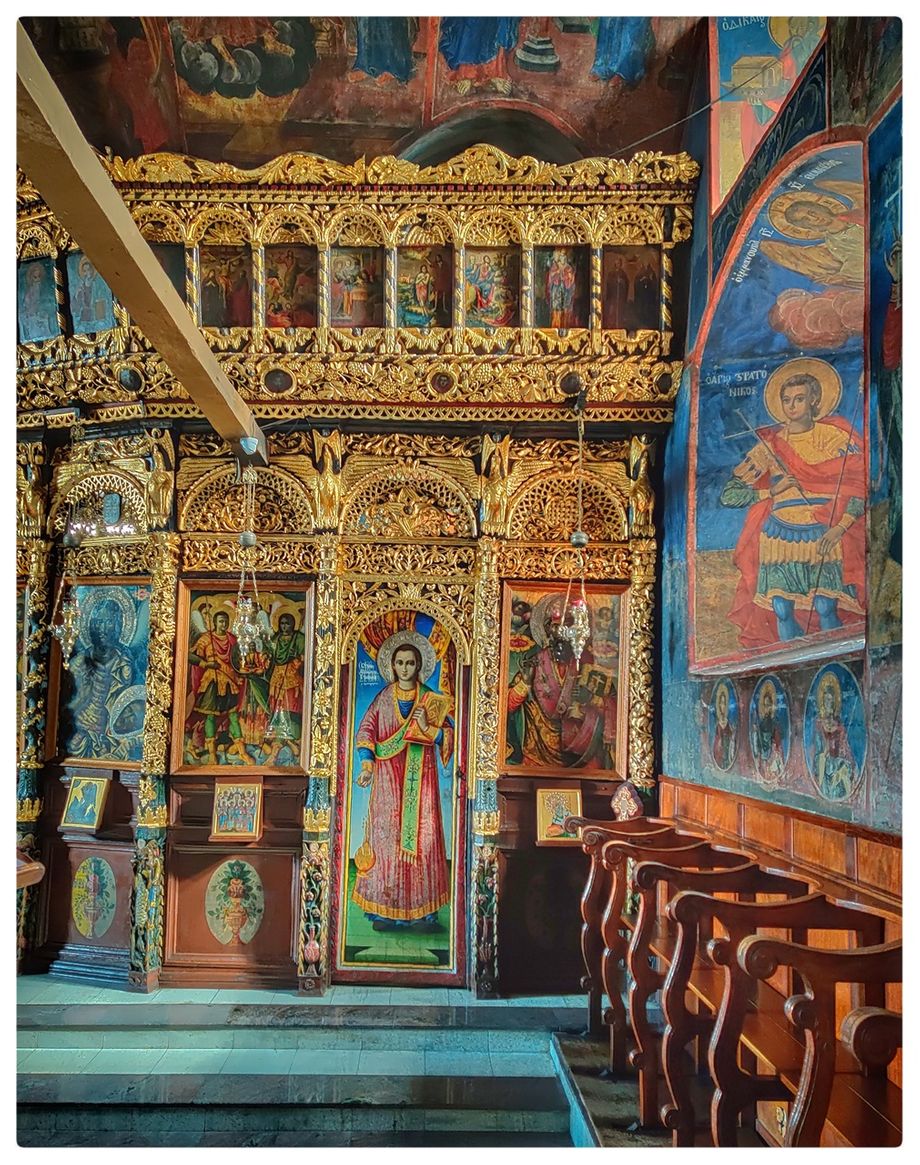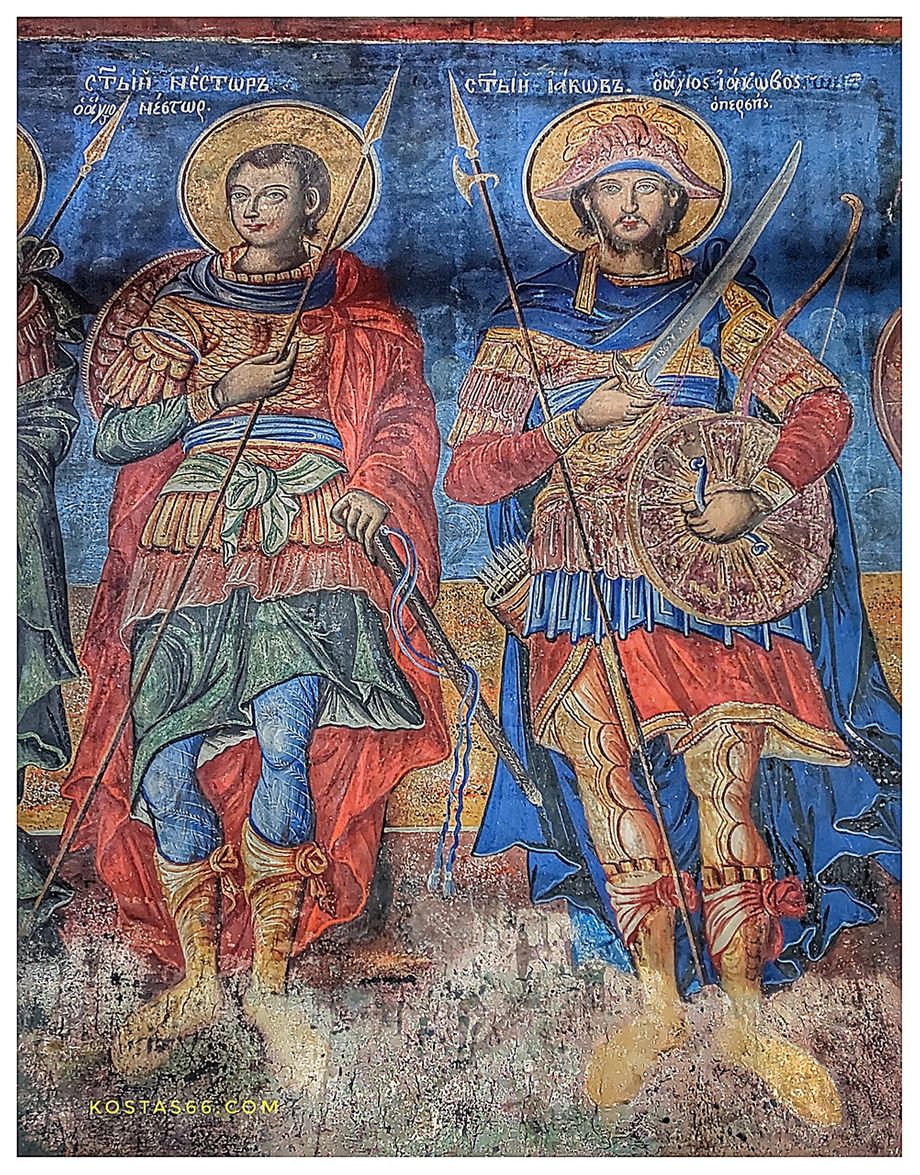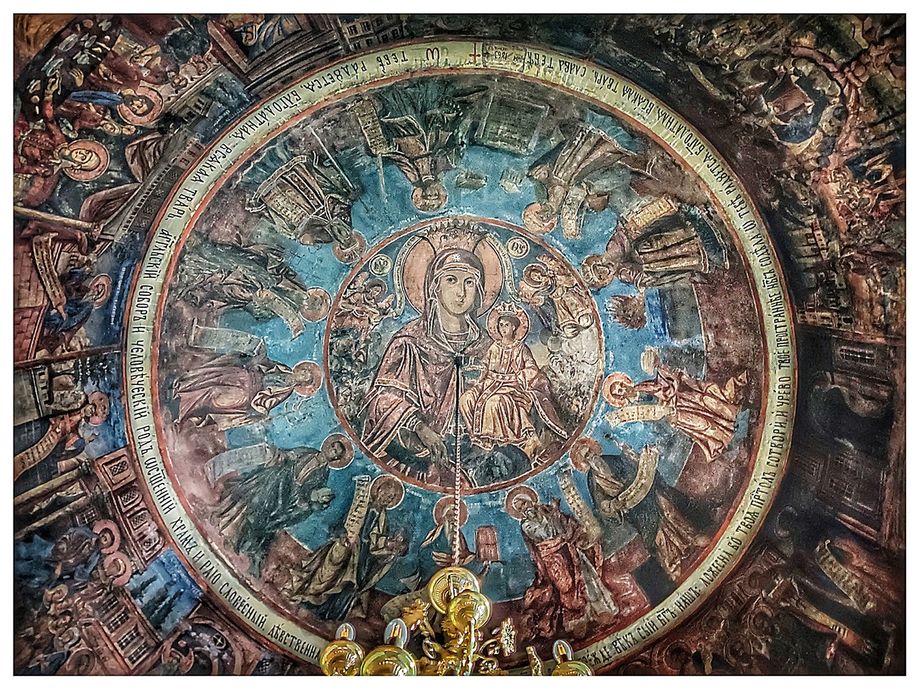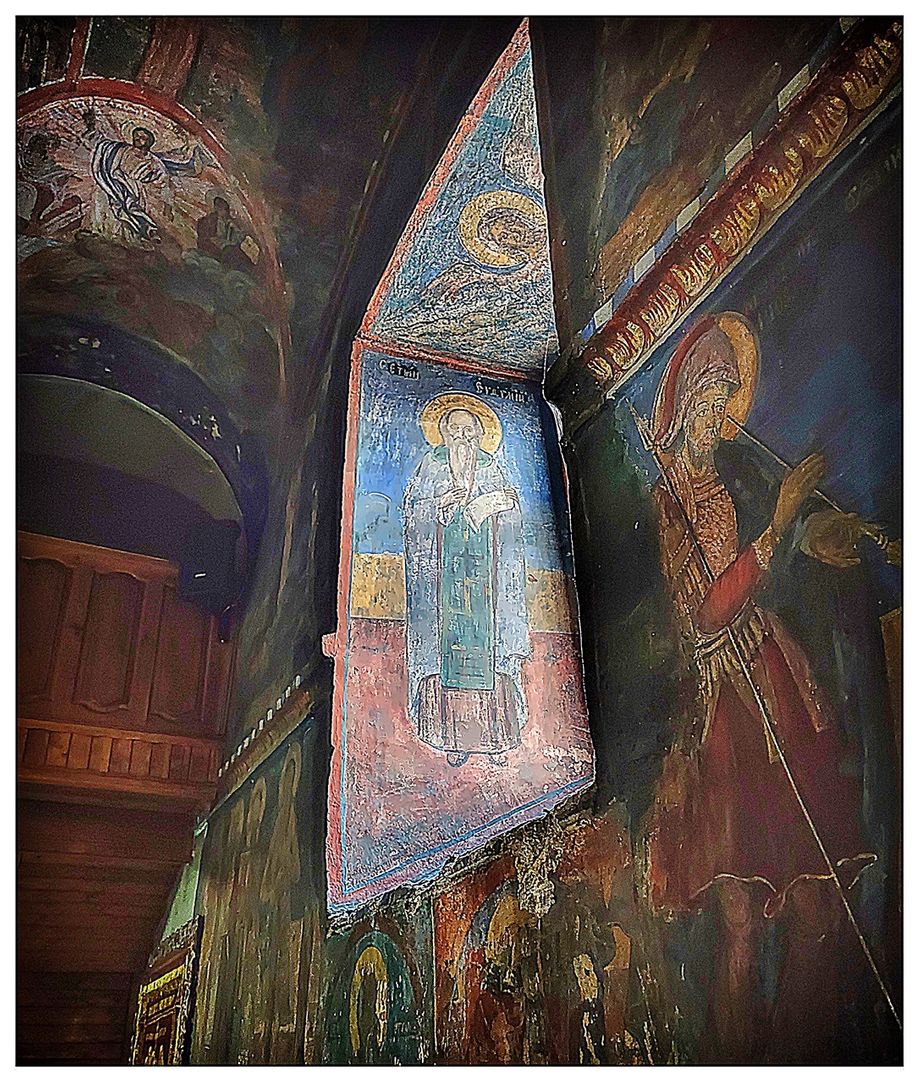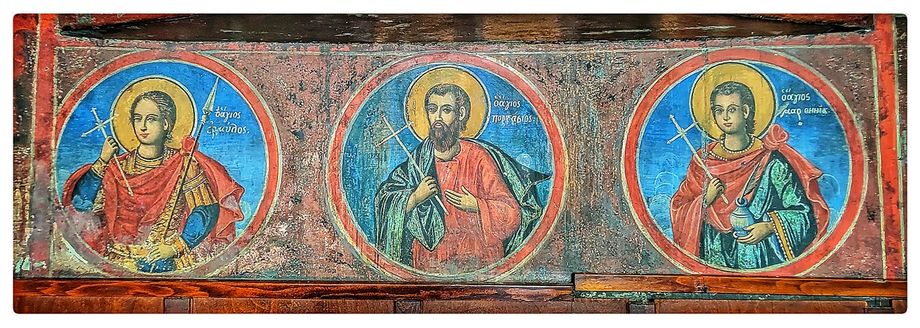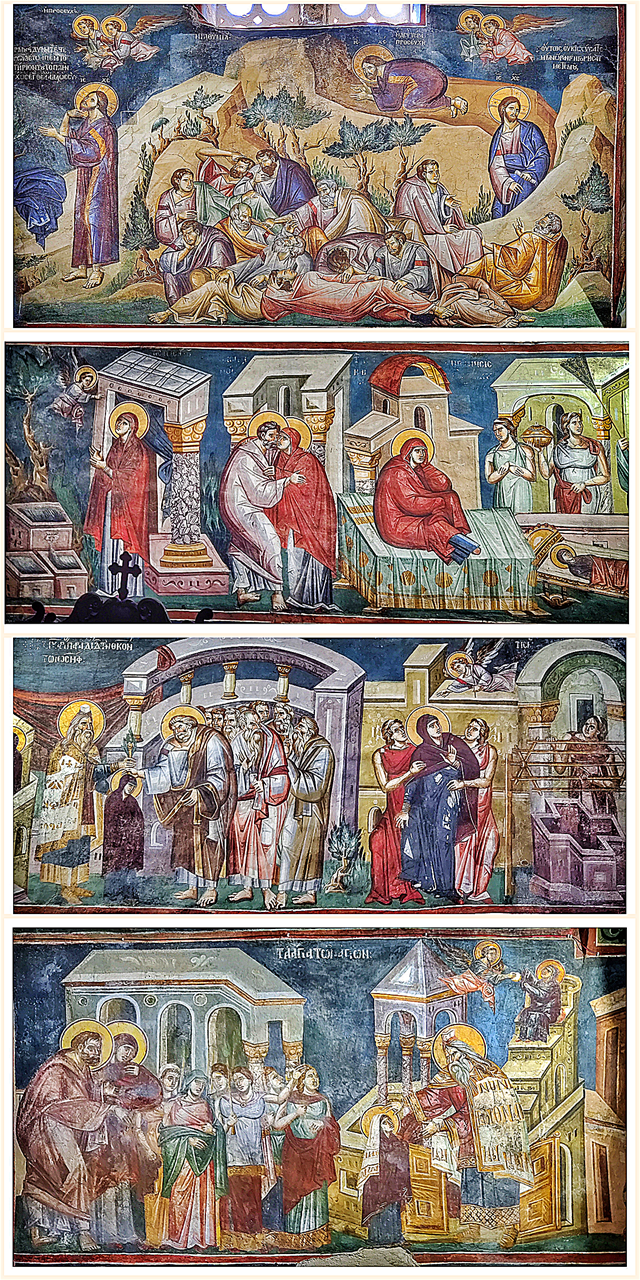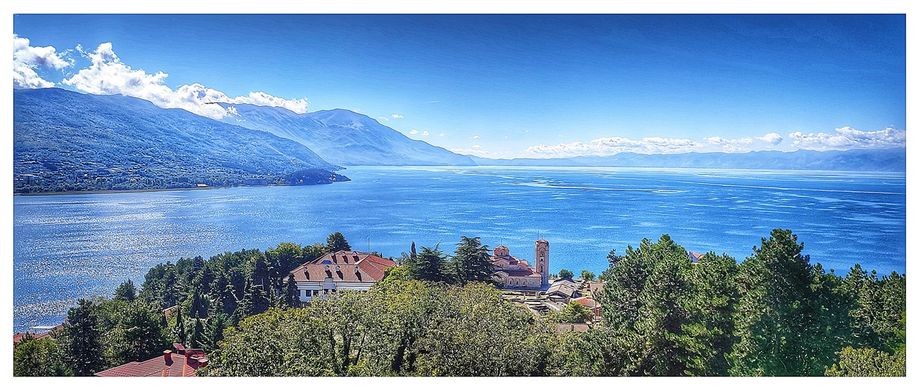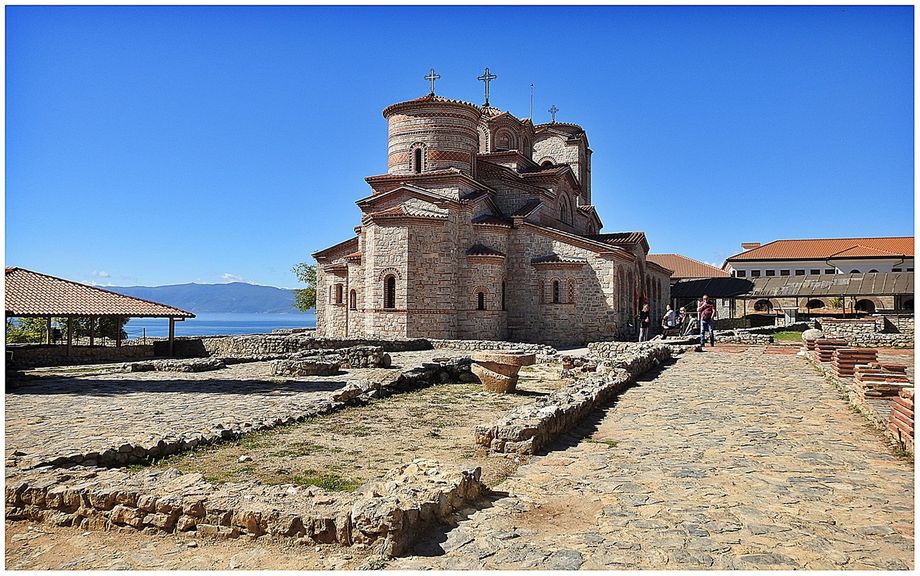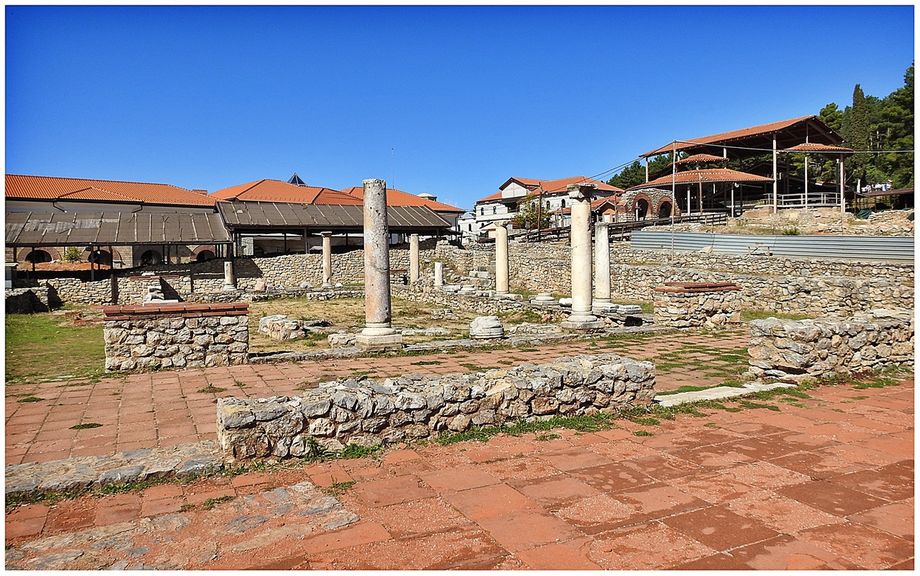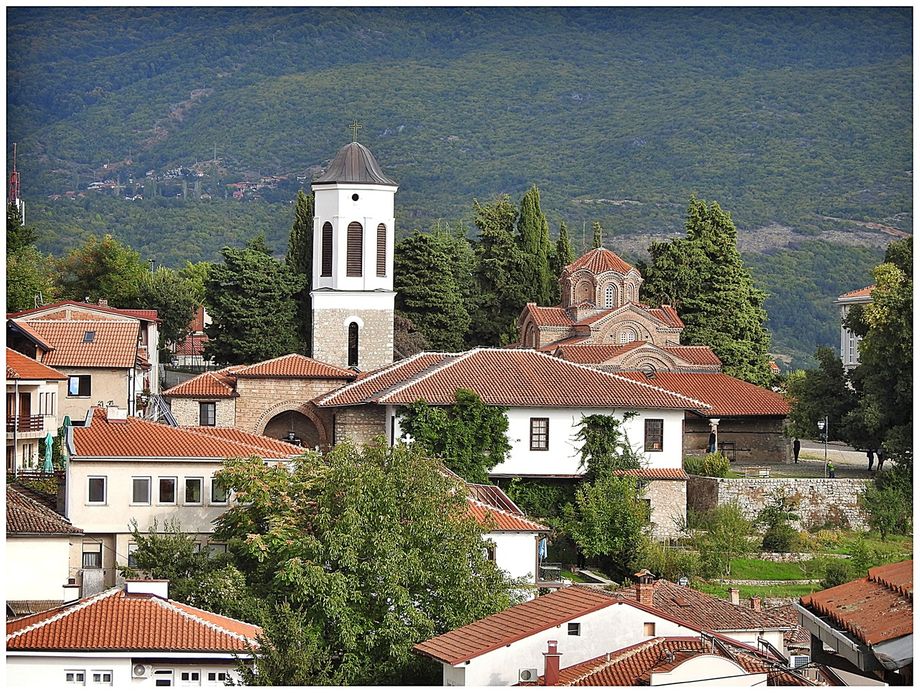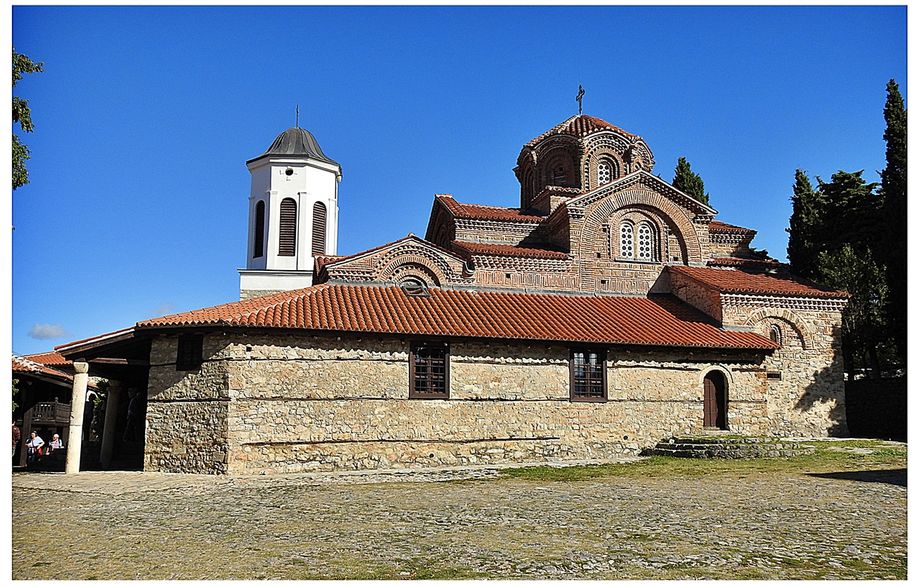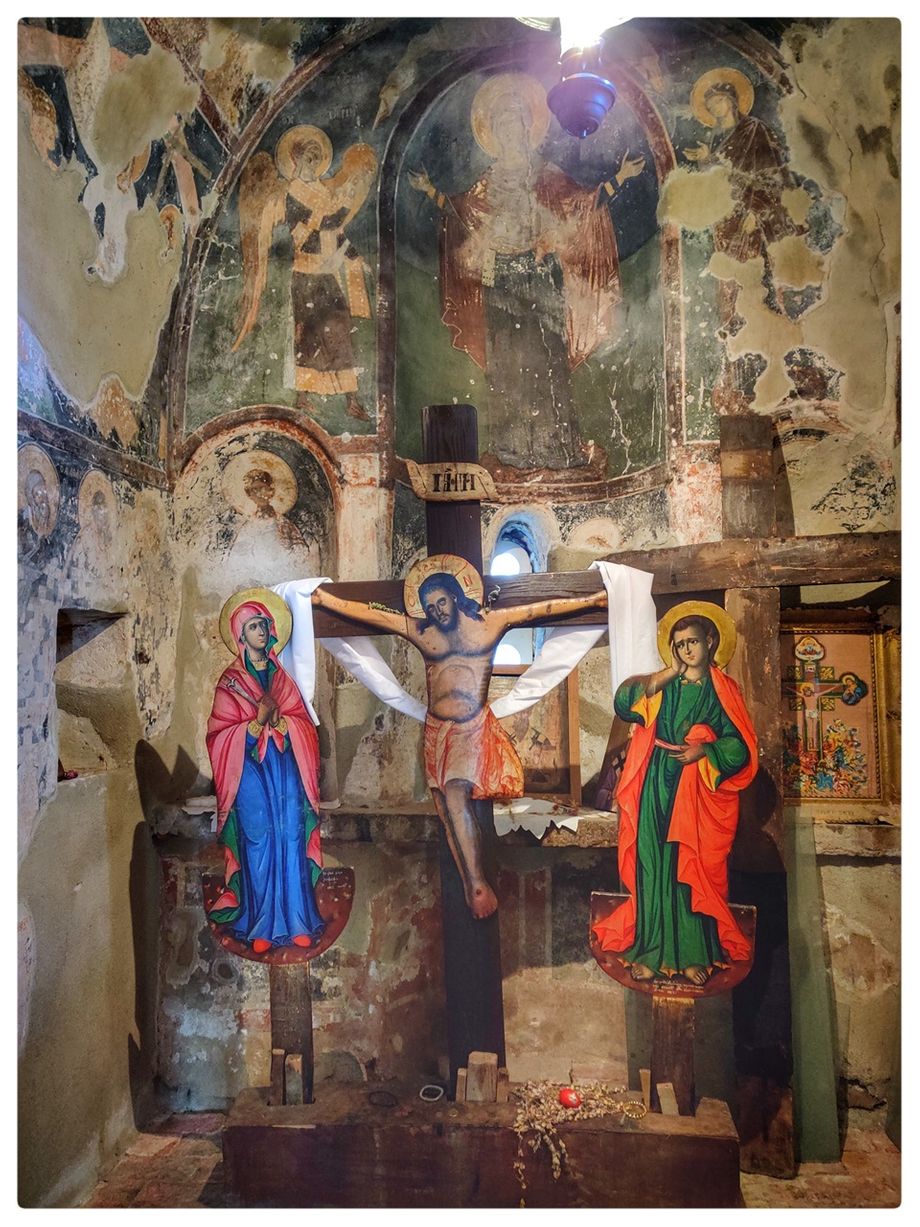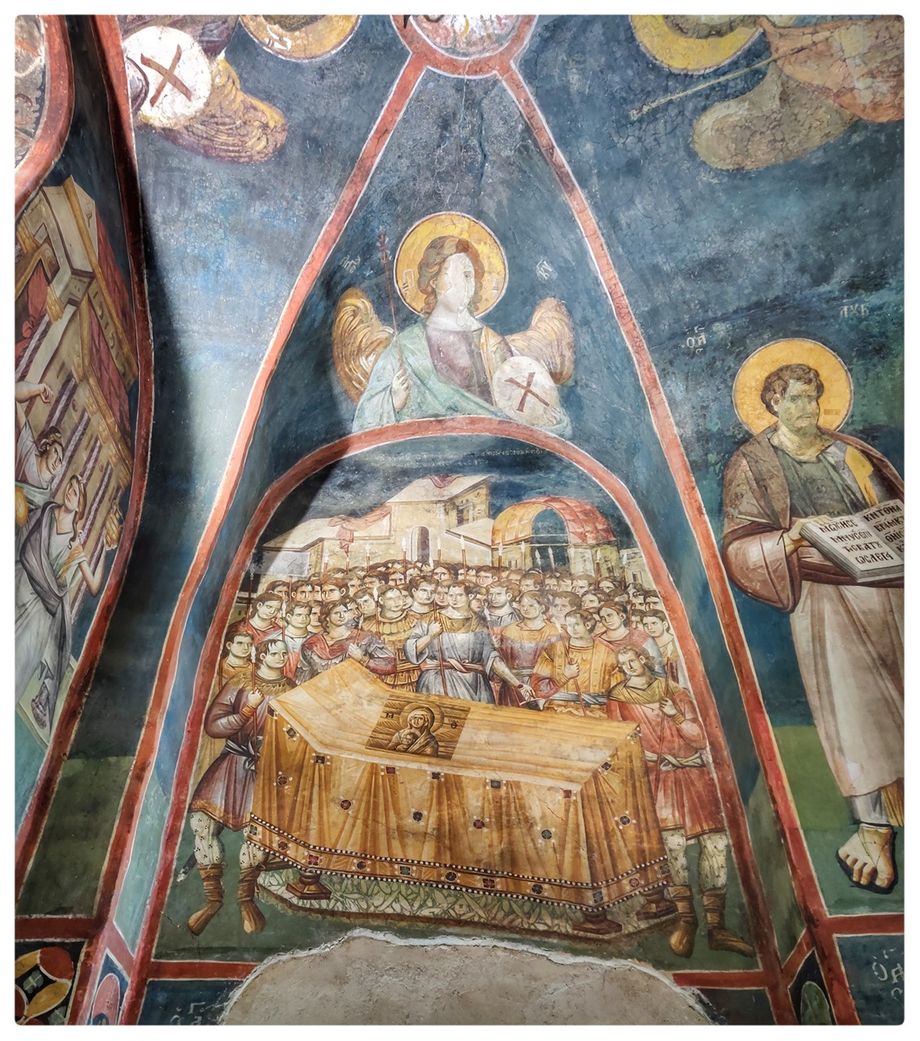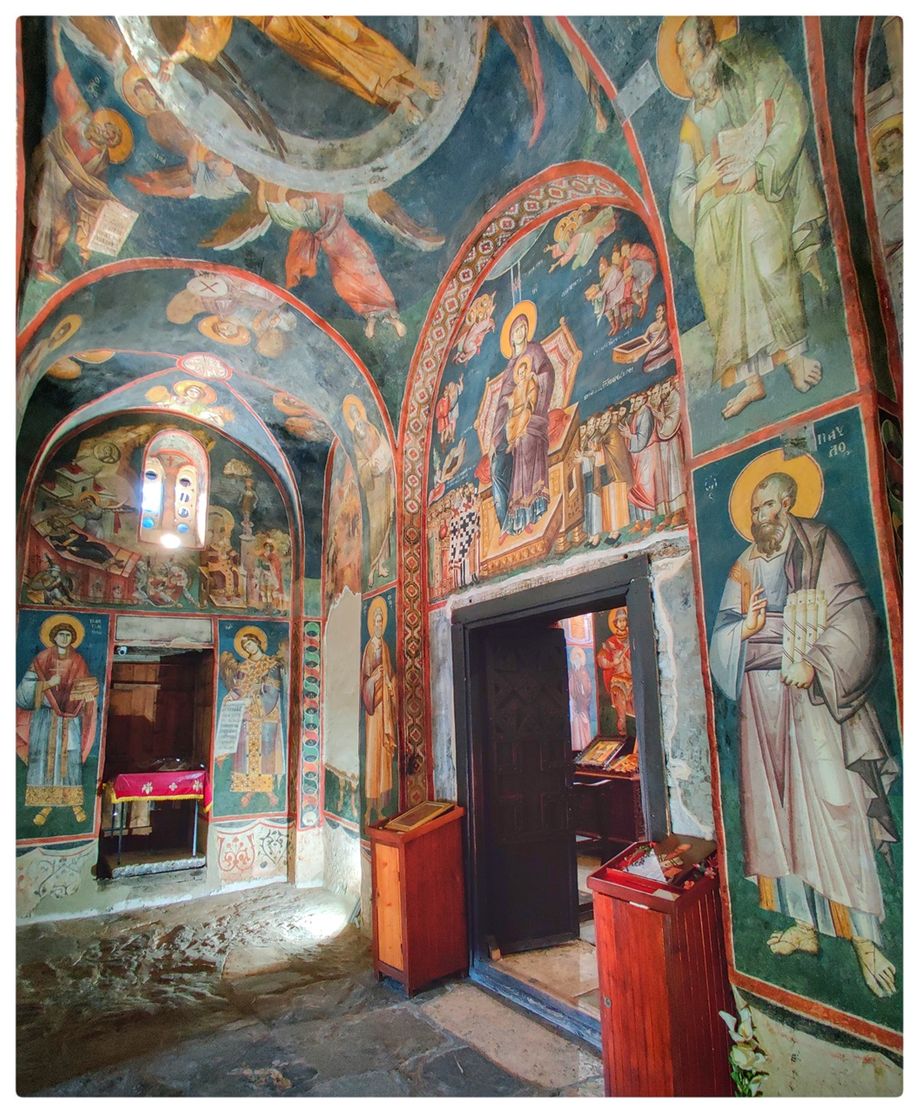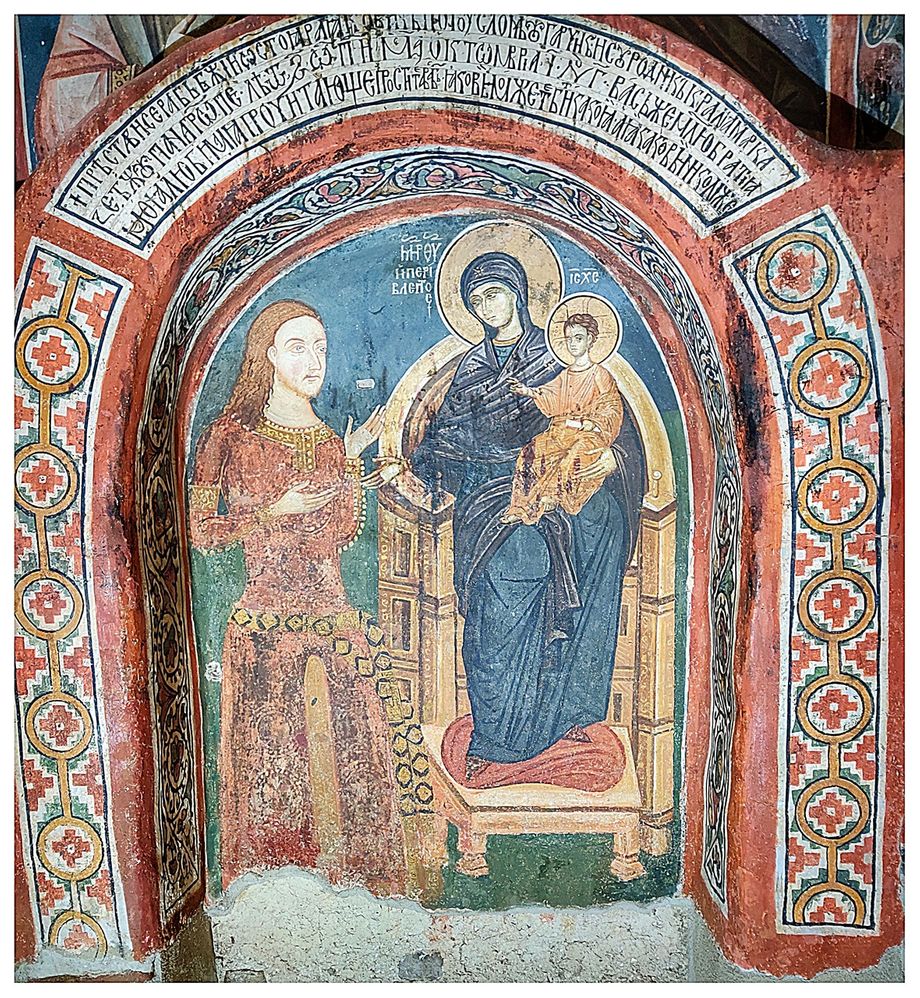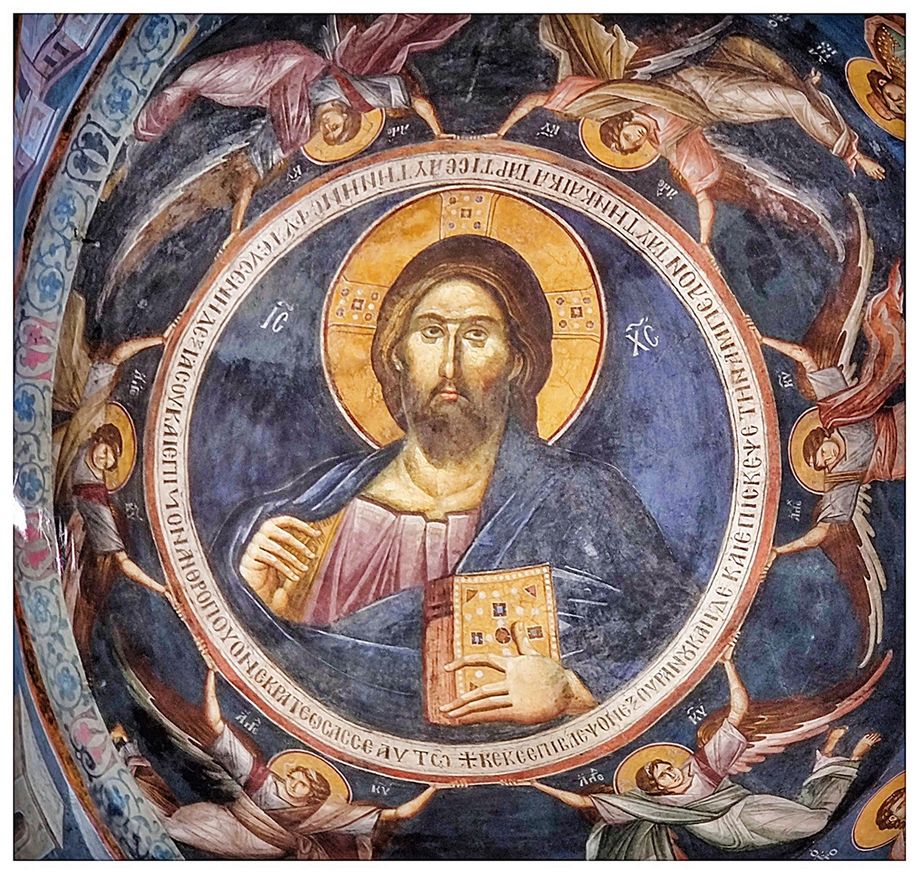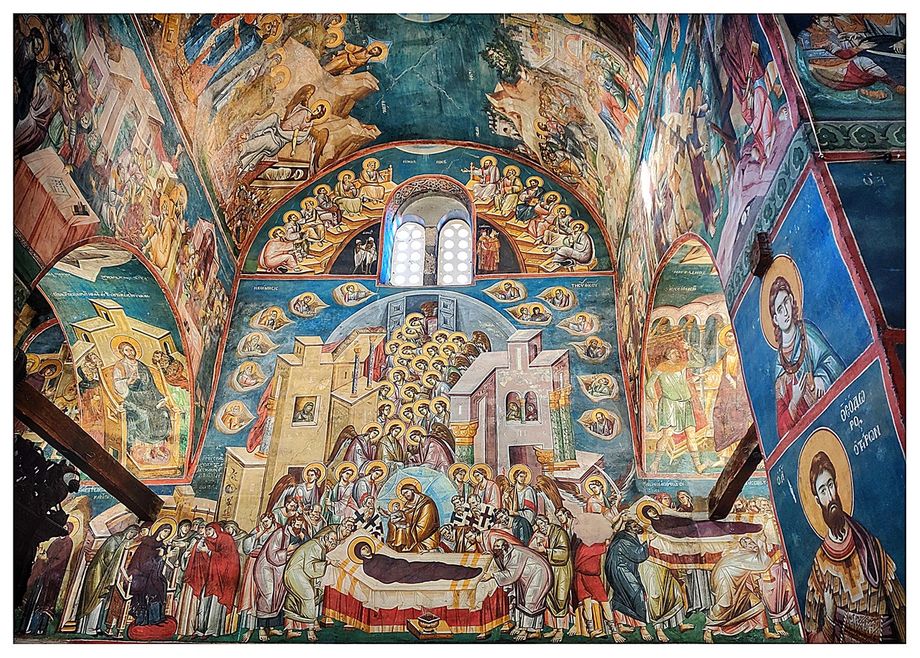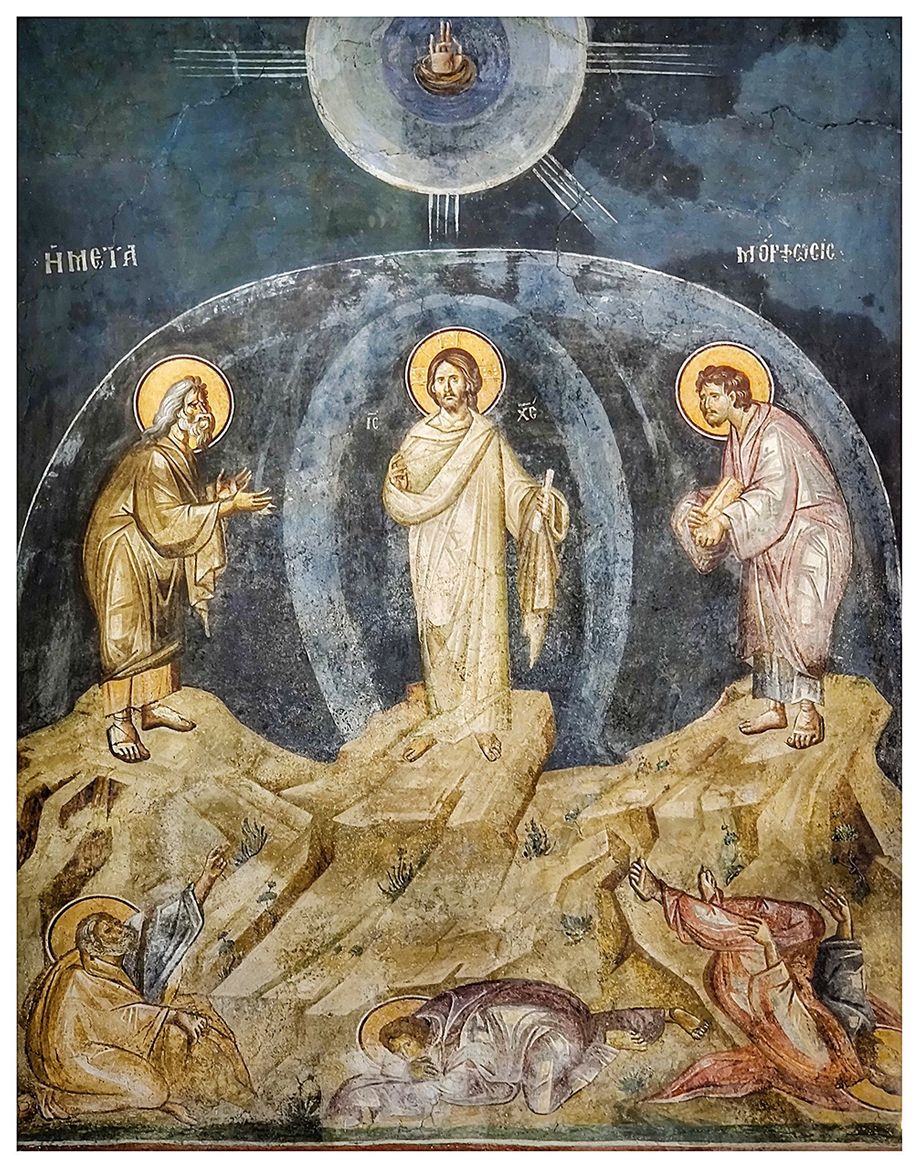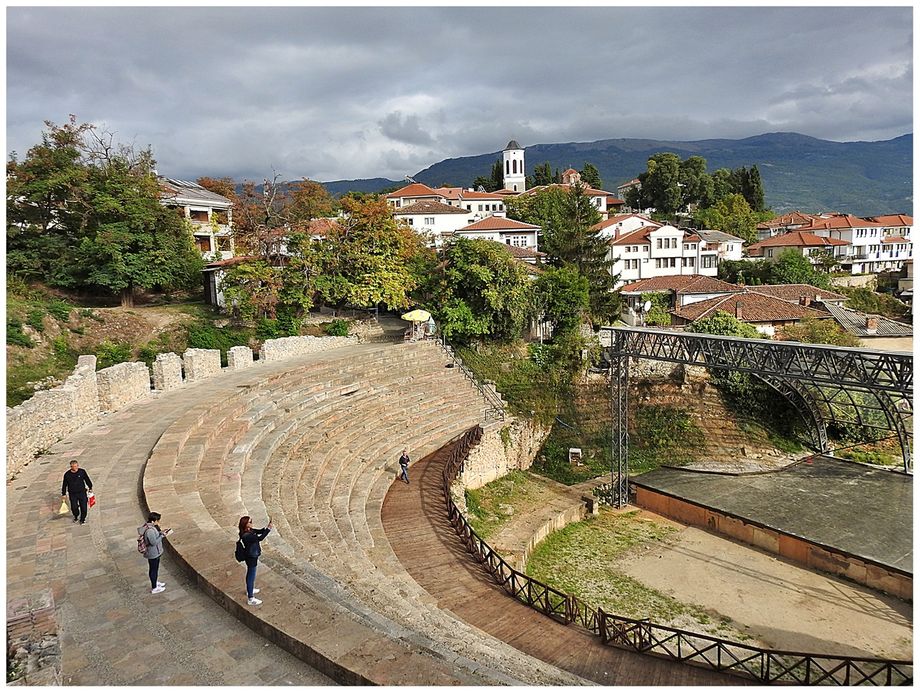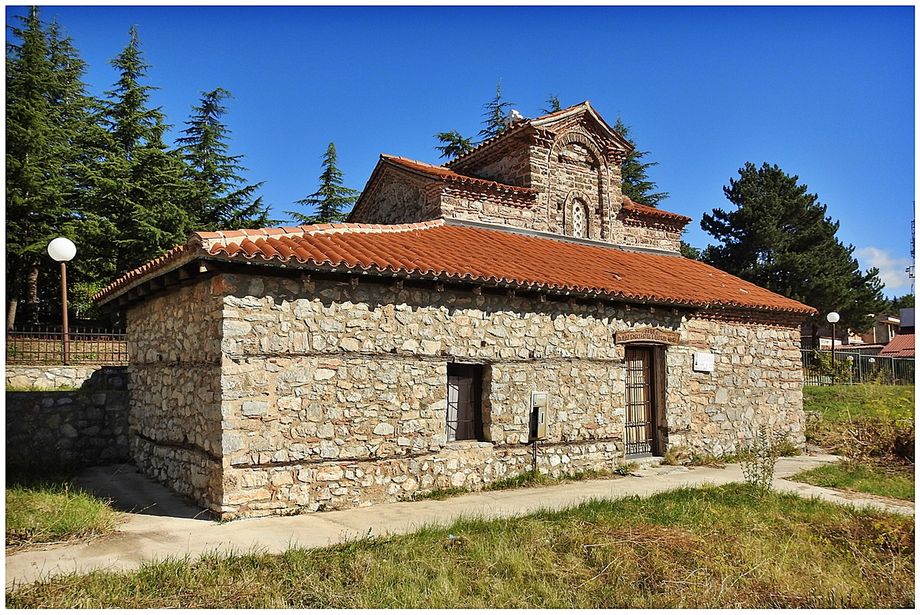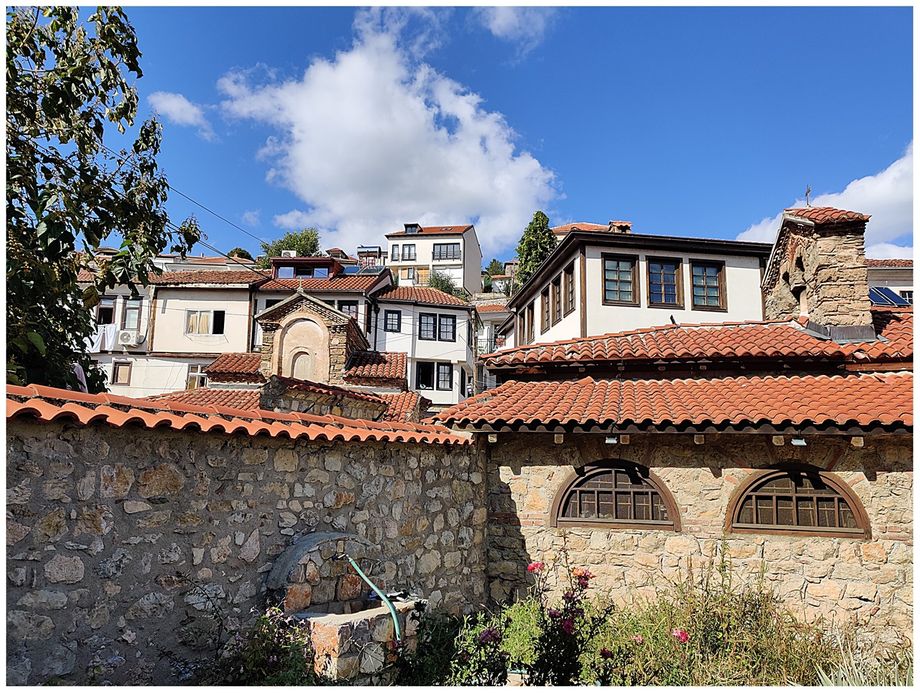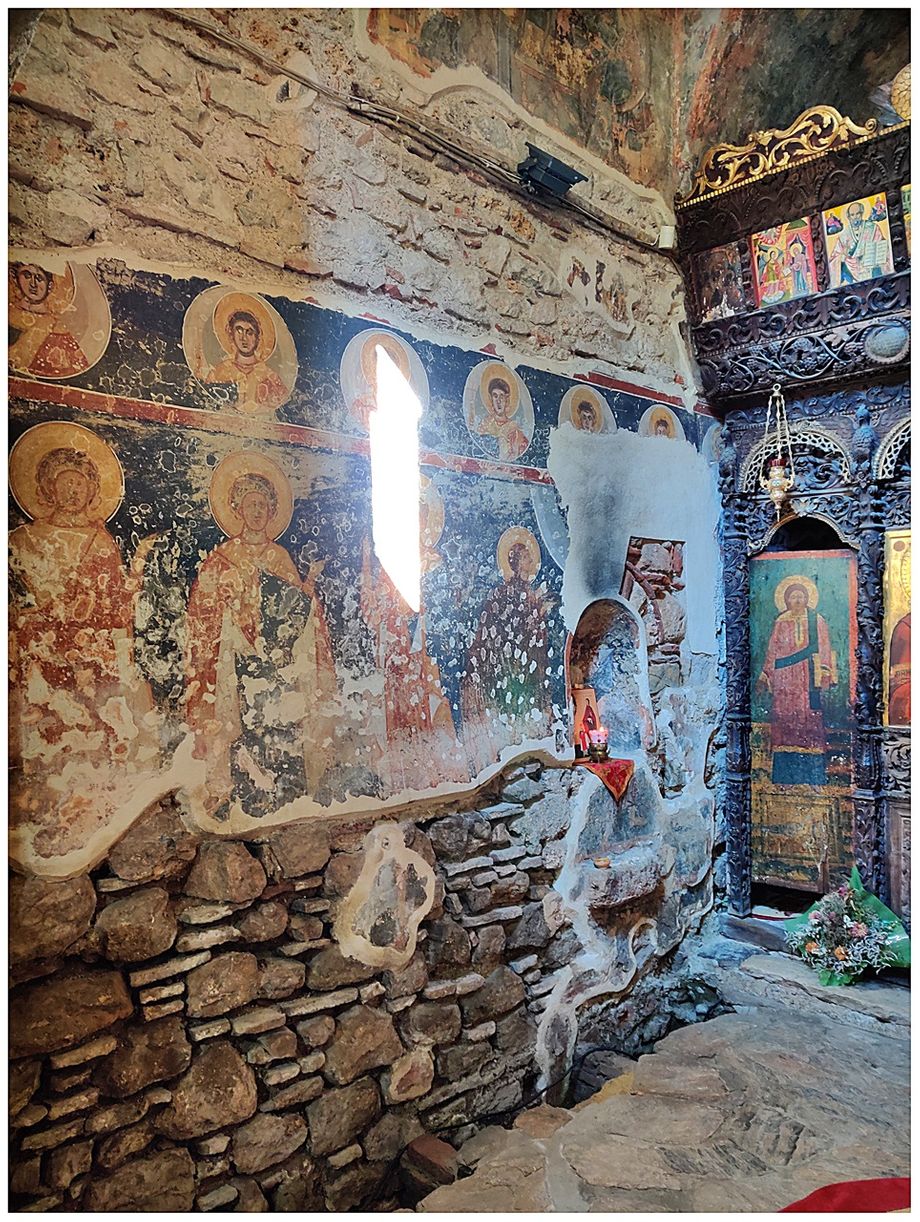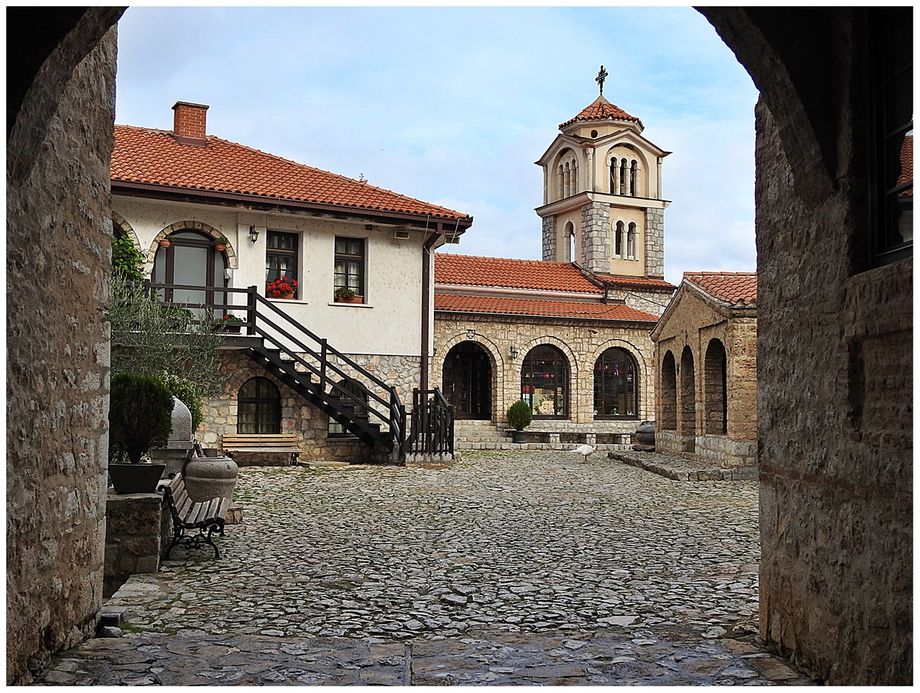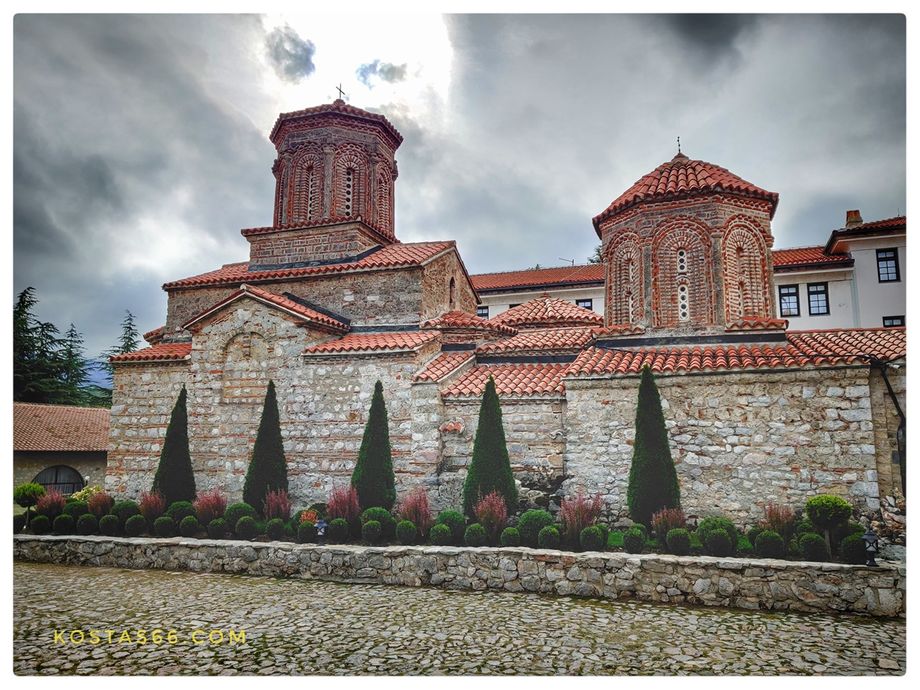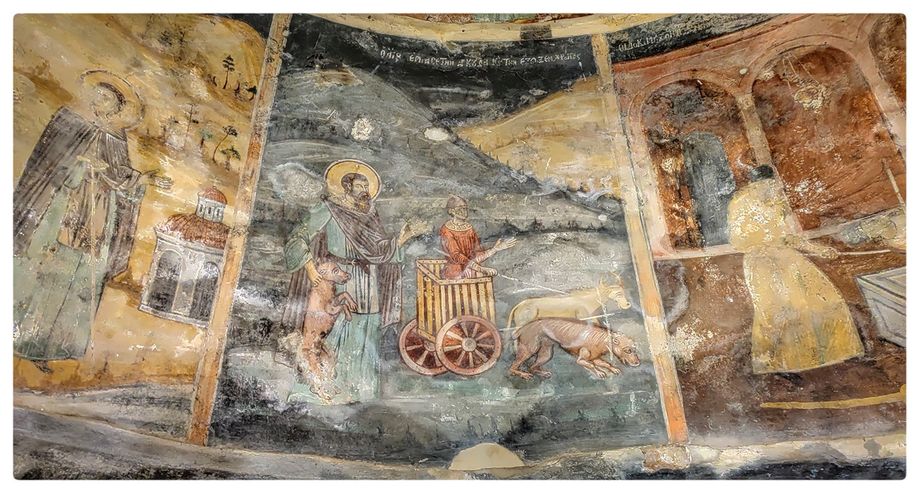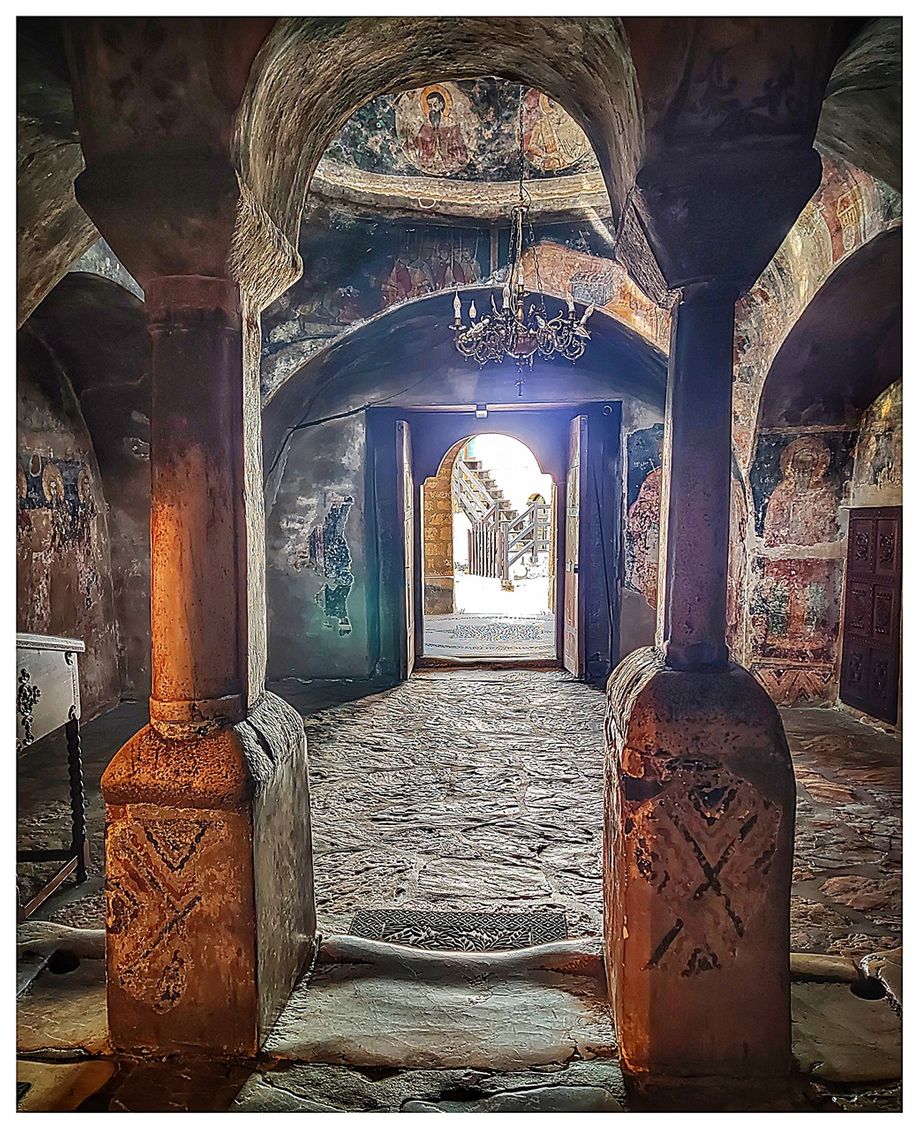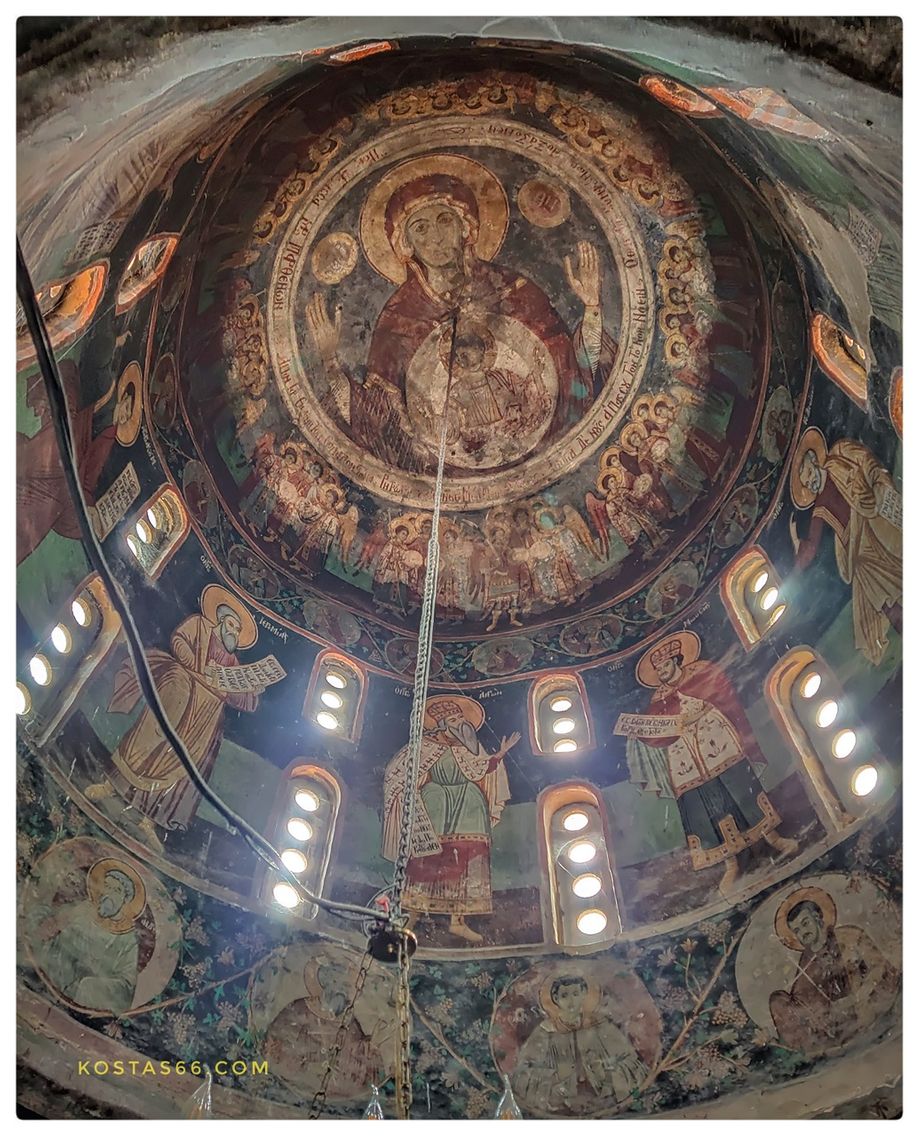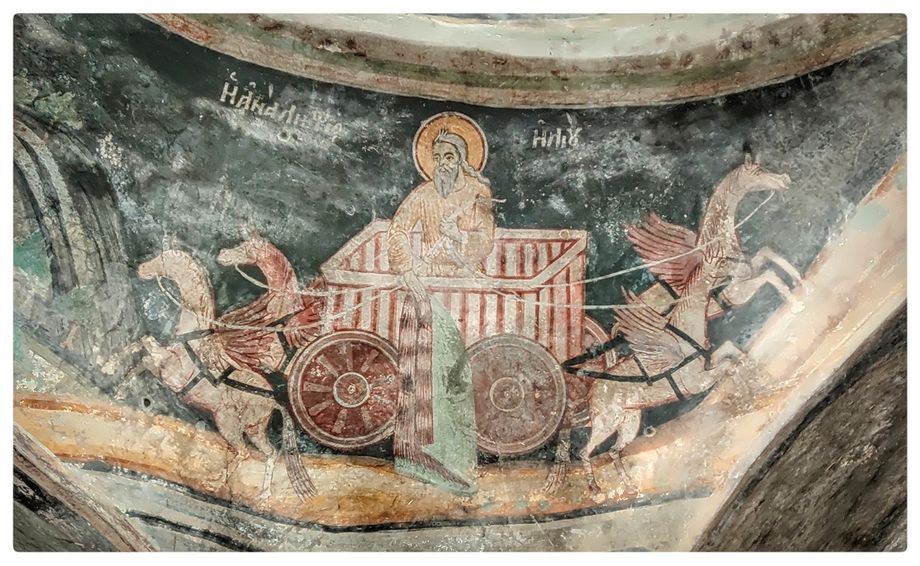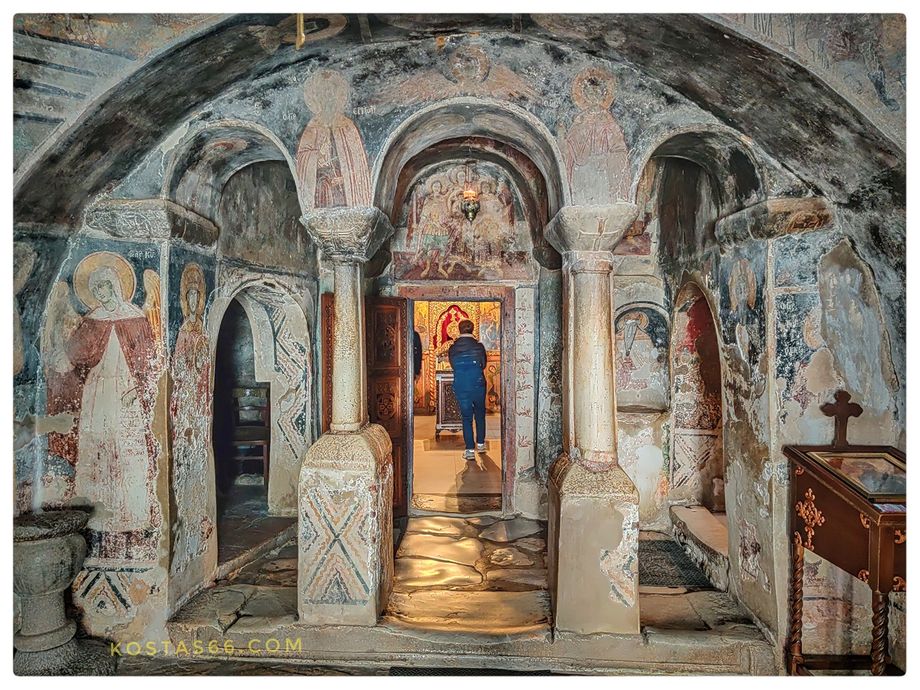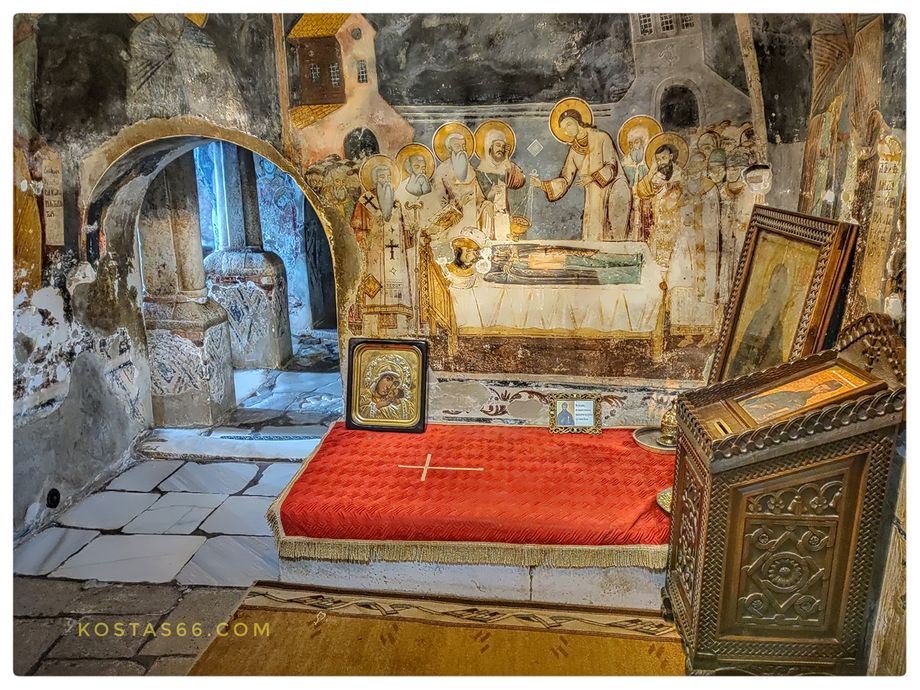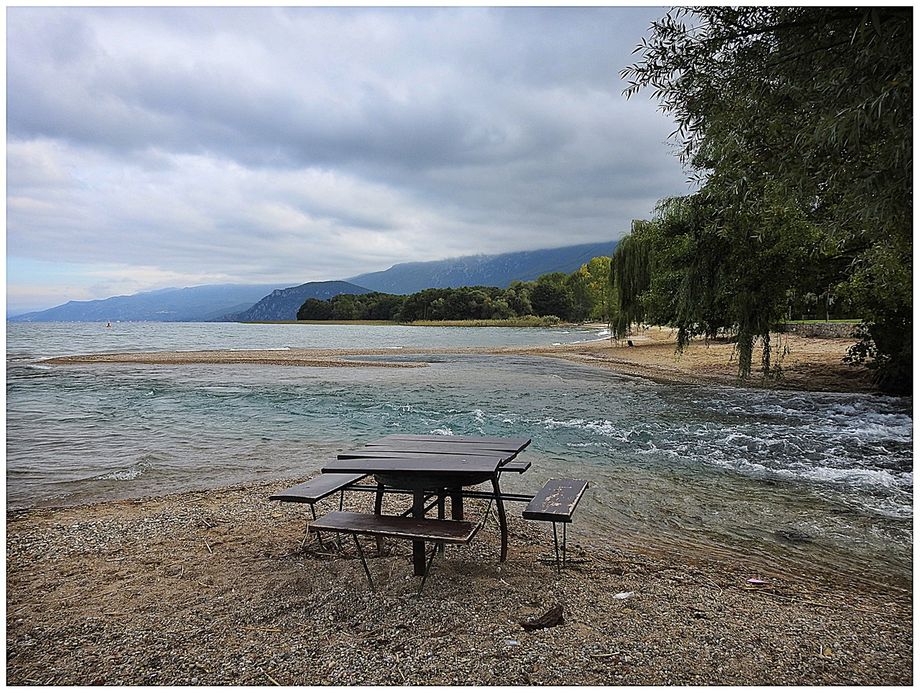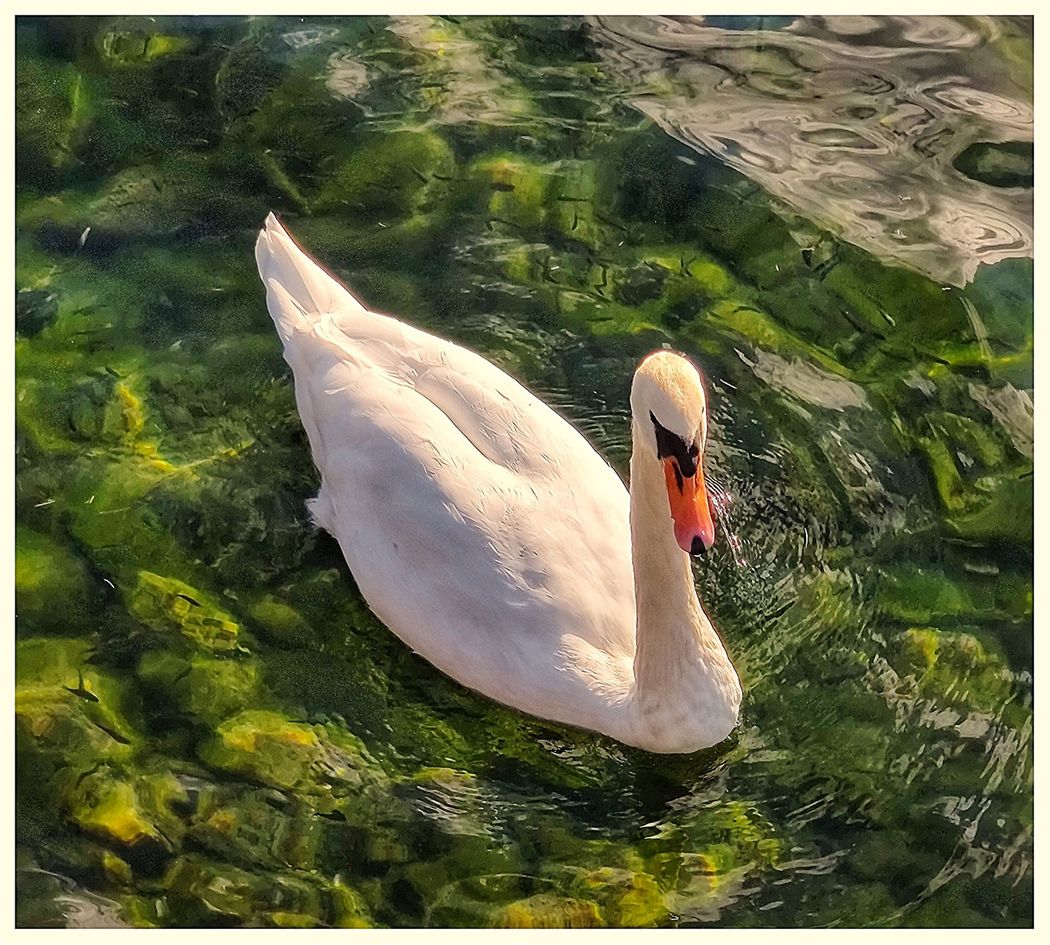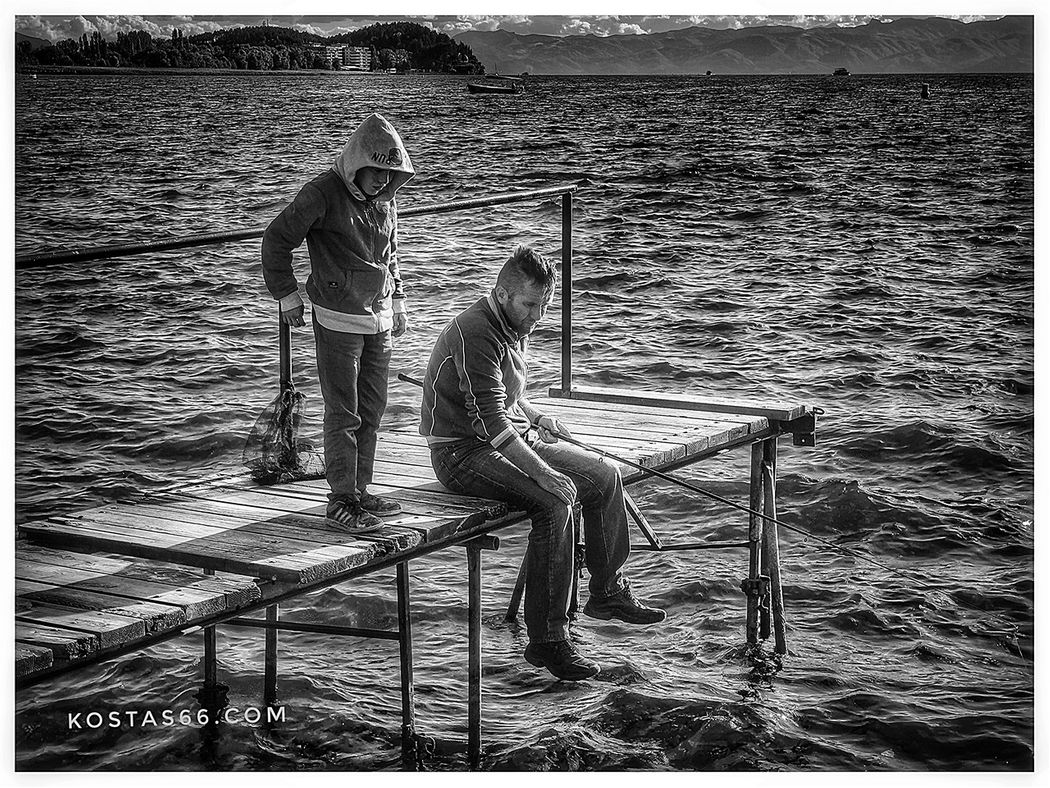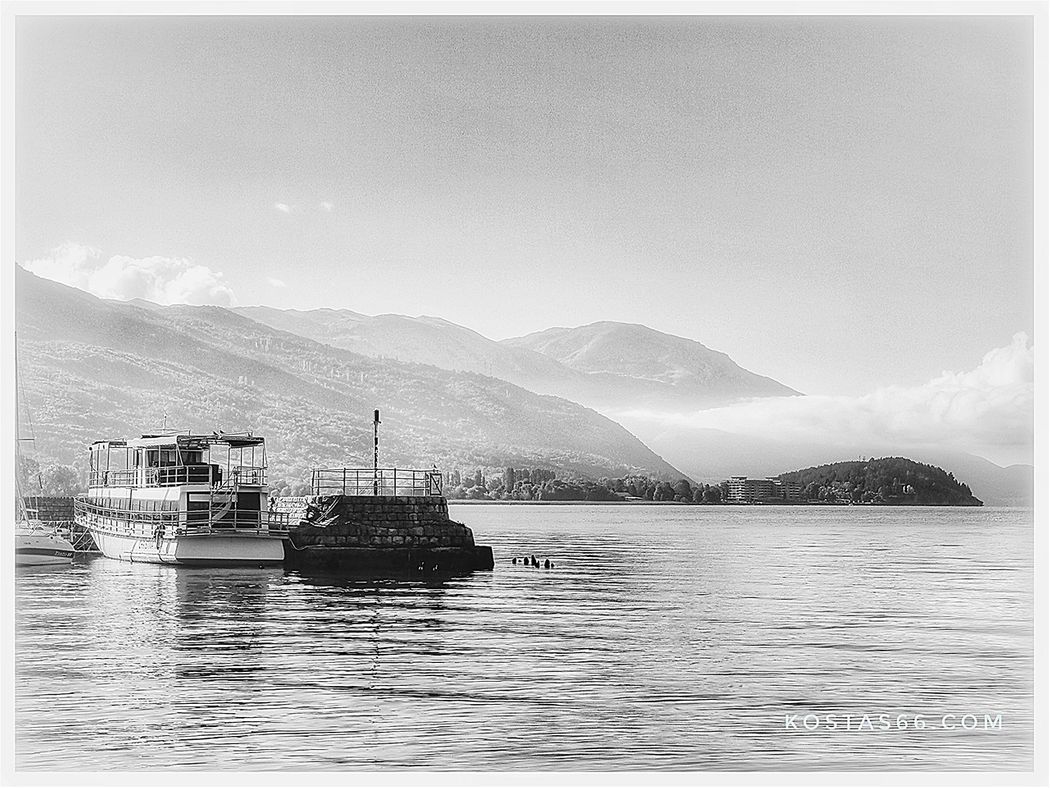Ohrid (Αχρίδα, in Greek) is a city in North Macedonia built on the northern shores of Lake Ohrid. The lake, shared between North Macedonia and Albania and is very close to the Greek borders, is one of Europe's most profound and oldest lakes, with a unique aquatic ecosystem of worldwide importance, with more than 200 endemic species.
Lake Ohrid.
Lake Ohrid at sunset.
Lake Ohrid in the morning.
Lake Ohrid is a fisherman's paradise.
Lake Ohrid.
Fishing boats in Lake Ohrid.
Lake Ohrid.
The city is rich in picturesque houses and monuments, and tourism is predominant. It is said that Ohrid once had 365 churches, one for each day of the year, and has been referred to as the "Jerusalem of the Balkans". Even today, the Byzantine churches with the marvelous frescos are the area's major tourist attraction.
In 1979 and 1980, Ohrid and Lake Ohrid were accepted as Cultural and Natural World Heritage Sites by UNESCO. These titles are in danger as the Government (local and central) has not made much to preserve these cultural and natural treasures. On the contrary, the situation is very disappointing. If it were not the political lobbying in UNESCO, the place would have long been taken from the prestigious list.
Looking at the city from afar, it looks lovely and well-preserved with all the mansions and the roof-tiled houses. But when you walk in the streets, it is evident that tourism and overdevelopment have left scars on the buildings and the surrounding area. Old houses have been left to collapse or reconstructed to look old to the untrained eye. But, to those who can understand, the restoration is nothing more than new buildings, poor “facsimiles” of the originals.
Let us be fair and realistic: the city and the lake are lovely and pleasant. The perfect place for the relaxing holidays we all crave for. The city is crowded and chaotic during the summer, and I do not recommend a visit. I was there in early October, and I loved it.
The old part of the city located on the hilly promontory seen from the long lakeshore promenade.
Tsar Samuil street in the old town.
Potpesh beach.
Ali Pasha Mosque.
St Clement of Ohrid street.
An old house on the way to Perybleptos church.
Typical street in Ohrid.
Typical street in old town.
The port of Ohrid.
Ohrid city.
Typical old house in Ohrid.
A brief History of Ohrid
In antiquity, the city was known under the ancient Greek name of Λυχνίς (Lychnis) and Λυχνιδός (Lychnidos), probably meaning "city of light", literally "a precious stone that emits light", from the Greek λύχνος (lychnos=lamp, portable light). It became the capital of the First Bulgarian Empire in the early medieval period and was often referred to by Byzantine writers as Achrida (Ἄχριδα, Ὄχριδα, or Ἄχρις).
The earliest inhabitants of the Lake Ohrid region were the Enchele, an Illyrian tribe, and the Dassaretae, an ancient Greek tribe based further East in the region of Lynkestis. According to recent excavations, this was a town as early as the Greek king Phillip II the Macedon. The existence of the ancient Greek city of Lychnidos is linked to the Greek myth of the Phoenician prince Cadmus who, banished from Thebes in Boeotia, fled here and founded the town of Lychnidos on the shores of the modern Lake Ohrid. It was located along the Via Egnatia, which connected the Adriatic port Dyrrachion with Byzantium.
Archaeological excavations prove the early adoption of Christianity in the area. The South Slavs began to arrive in the area during the 6th century AD. Bulgaria conquered the city around 840, and soon after, the name Ohrid first appeared (in 879). The Ohrid Literary School, established in 886 by Clement of Ohrid, became one of the two major cultural centers of the First Bulgarian Empire. Between 990 and 1015, Ohrid was the capital and stronghold of the Bulgarian Empire. From 990 to 1018, Ohrid was also the seat of the Bulgarian Patriarchate. After the Byzantine reconquest of the city in 1018 by Basil II, the Bulgarian Patriarchate was downgraded to an Archbishopric of Ohrid and placed under the authority of the Ecumenical Patriarch of Constantinople. The higher clergy after 1018 was almost invariably Greek, including during the period of Ottoman domination.
In 1395 the Ottomans under Bayezid I captured the city, which remained under their rule until 29 November 1912, when the Serbian army took control of the city. The city remained part of the Kingdom of Serbia and later of Yugoslavia till 1991, when it became part of the new state of the Republic of Macedonia (now Republic of Northern Macedonia).
Robevi family house.
Tourist attractions
Today, Ochrid is the most tourist destination in the area, primarily its old part, which once used to be inside the fortification walls. Only very few ruins of those walls remain today.
Ochrid asset is undoubtedly religious tourism. Thousands of Orthodox Christians come here to visit the old churches and Monasteries. The most important religious monuments of the city are:
👍The Church of St. Sophia (the current 11th-century church was built on the foundations of a Metropolitan Cathedral demolished in the first decade of the 6th century by Barbarian invasions) with frescoes from the 11th, 12th and 13th centuries, which represent some of the most significant achievements in the Byzantine painting of the time.
👍 St. Clement built the Church of St. Panteleimon in 893 on the foundation of an early Christian five-aisle basilica dedicated to St. Paul the Apostle, who preached Christianity in Lychnidos in the 1st century AD. The church and the ruins of the basilica and its baptistery are located inside the big archeological site of Plaosnik.
👍The Holy Mother of God Perybleptos church, built in 1295, has stunning frescoes. The frescoes include images from the Passion and the Gospels, the Virgin Mary's life, and John the Baptist's life. Byzantine painters Michael and Eutychios signed their work at the church, making Holy Mother of God Peribleptos one of only four churches that preserves the signatures of these influential artists.
👍The church of the Assumption of Holy Mother of God - Kamensko. The church was built in the 17th century and expanded later. The frescos were painted by one of the most famous icon and fresco painters in the Balkans in the 19th century, Dico Zograf, in 1863.
👍The Church of St. John at Kaneo is situated on the cliff over Kaneo Beach overlooking Lake Ohrid. The church is dedicated to John of Patmos, the writer of Revelation. The construction date of the church remains unknown, but documents detailing the church property suggest that it was built in the first half of the 15th century.
👍Several other smaller churches are spread around.
Other important atractions include:
👍The Robevi family house, built in its current state in 1863–1864 by Todor Petkov, and which today houses the Archeological Museum, the Hellenistic Ancient Theater built in 200 BC, and the 10th-century Samuil's Fortress, which was heavily restored in 2003 with the addition of entirely new battlements where none had survived.
Samuil's Fortress
Samuil's fortress.
The entrance of the Samuil's Fortress.
Me on top of Samuil's Fortress.
Looking towards north-east from Samuil's Fortress.
the Church of St. John at Kaneo
The Church of St. John at Kaneo.
The Church of St. John at Kaneo.
The Church of St. John at Kaneo seen from Potpesh beach.
the Church of St. Sophia
The Church of St. Sophia.
The Church of St. Sophia.
The Church of St. Sophia.
The Church of St. Sophia.
Inside the Church of St. Sophia.
The Church of St. Sophia.
The Church of St. Sophia.
the church of Holy Mother of God - Kamensko
The iconostasis of the church of Holy Mother of God - Kamensko.
Frescos at the church of Holy Mother of God - Kamensko (Dimche Malenko street, near Piazza della Fontana).
Frescos at the church of Holy Mother of God - Kamensko (Dimche Malenko street, near Piazza della Fontana).
Frescoes of the church of Holy Mother of God - Kamensko.
Frescoes of the church of Holy Mother of God - Kamensko.
the Ancient Theater
Frescoes of the Mother of God Perybleptos church.
the Church of St. Panteleimon & the Plaosnik
The Church of St. Panteleimon.
The Church of St. Panteleimon and the archaeological site of Plaosnik.
Plaosnik and the 5th century basilica ruins.
the Mother of God Perybleptos church
Mother of God Perybleptos church seen from Samuil's Fortress.
Mother of God Perybleptos church.
Mother of God Perybleptos church.
Frescoes of Mother of God Perybleptos church.
Frescoes of Mother of God Perybleptos church.
Fresco of Mother of God Perybleptos church.
Fresco of Mother of God Perybleptos church.
Mother of God Perybleptos church.
Fresco of Mother of God Perybleptos church
The ancient theater.
the Holy Mother Bolnichka & other churches
The Saints Constantine and Helen is located close to Mother of God Perybleptos church.
Holy Mother Bolnichka church (on the left) and Saint Nikola Bolnichki church (on the right) are located near the lower gate square.
Inside the Holy Mother Bolnichka church.
The Monastery of Saint Naum
The Monastery of Saint Naum is situated along Lake Ohrid, 29 kilometers south of the city of Ohrid, very close to the Albanian borders. The monastery was established in the Bulgarian Empire in 905 by St Naum of Ohrid. St Naum is also buried in the church. Since the 16th century, a Greek school had functioned in the monastery. The area where the monastery of St Naum lies belonged to Albania for a short period from 1912 until June 28, 1925, when Zog of Albania ceded it to Yugoslavia due to negotiations between Albania and Yugoslavia and as a gesture of goodwill.
The Monastery is built on a lovely spot on the shore and next to some freshwater springs. Today, the only part of the old Monastery that has survived is the church with some of the most beautiful frescos in the area. The rest of the Monastery has been recently rebuilt and is highly commercialized, including a vast restaurant, a hotel, and souvenir shops.
The Monastery of Saint Naum.
The church of the Monastery of Saint Naum.
Fresco depicting Saint Naum inside the church of the Monastery of Saint Naum.
Inside the church of the Monastery of Saint Naum.
The church of the Monastery of Saint Naum.
Fresco depicting profet prophet Elias inside the church of the Monastery of Saint Naum.
The church of the Monastery of Saint Naum.
The tomp of Saint Naum.
The outlet of the waters of the spring close to the Monastery of Saint Naum.

